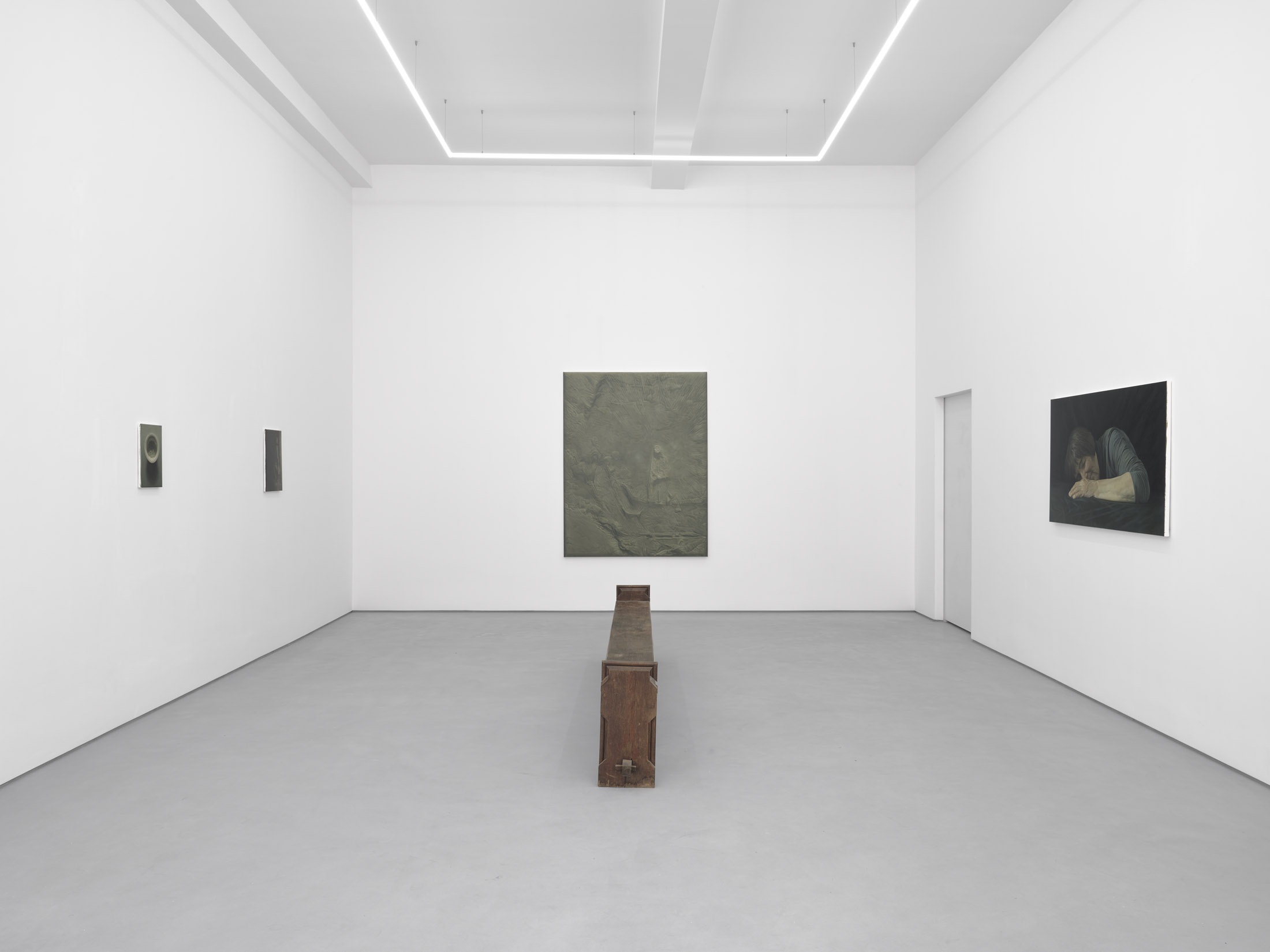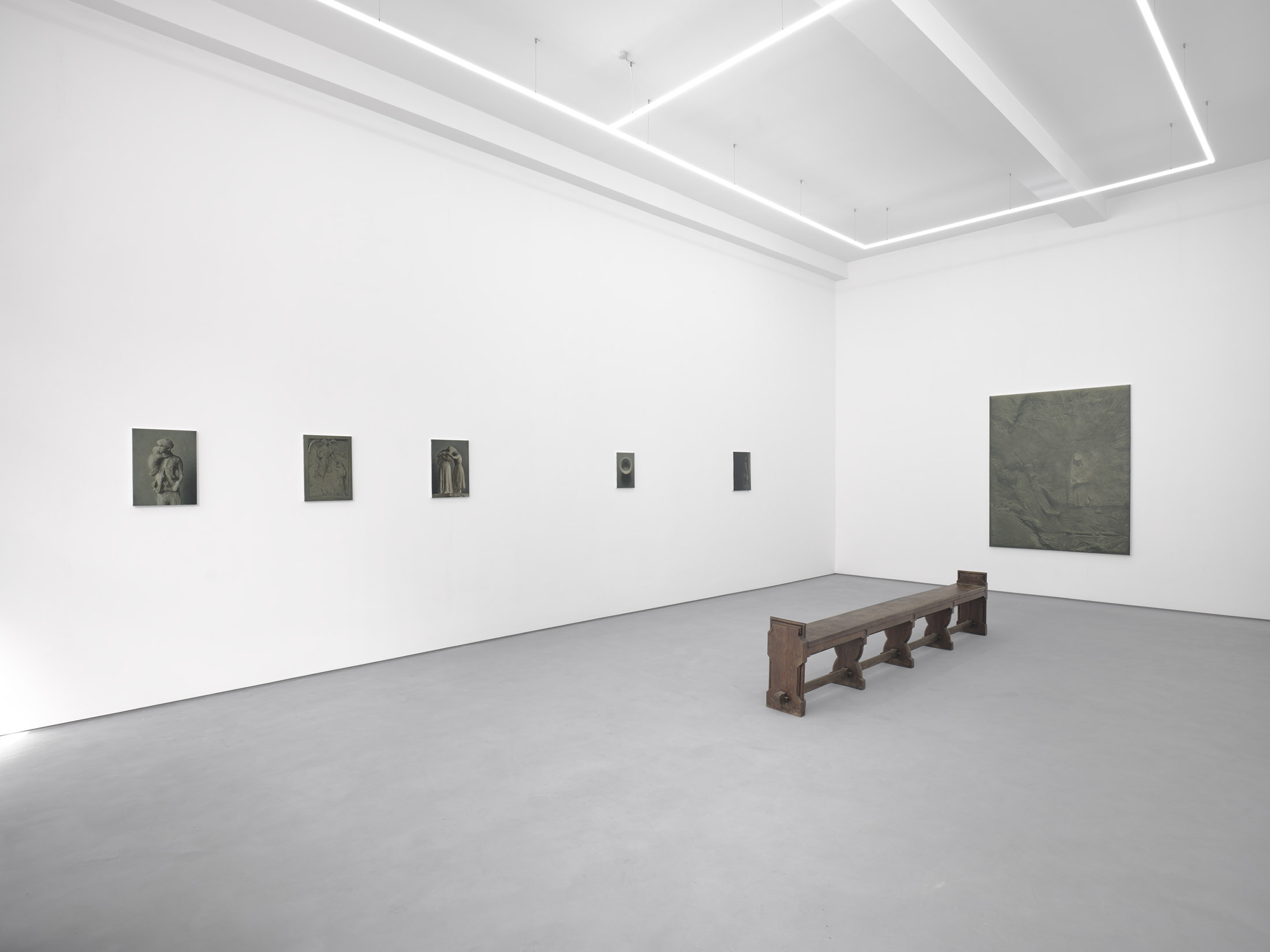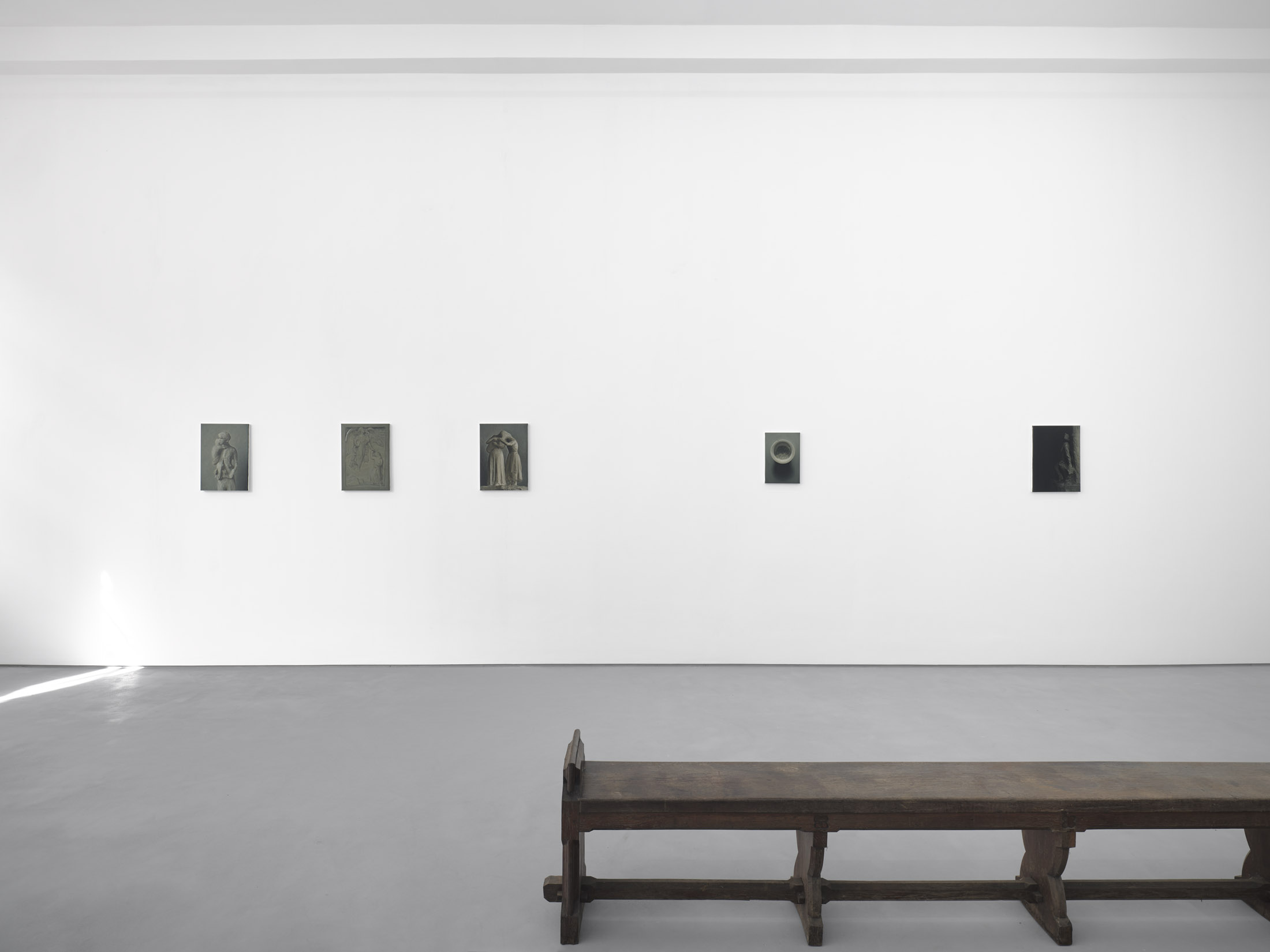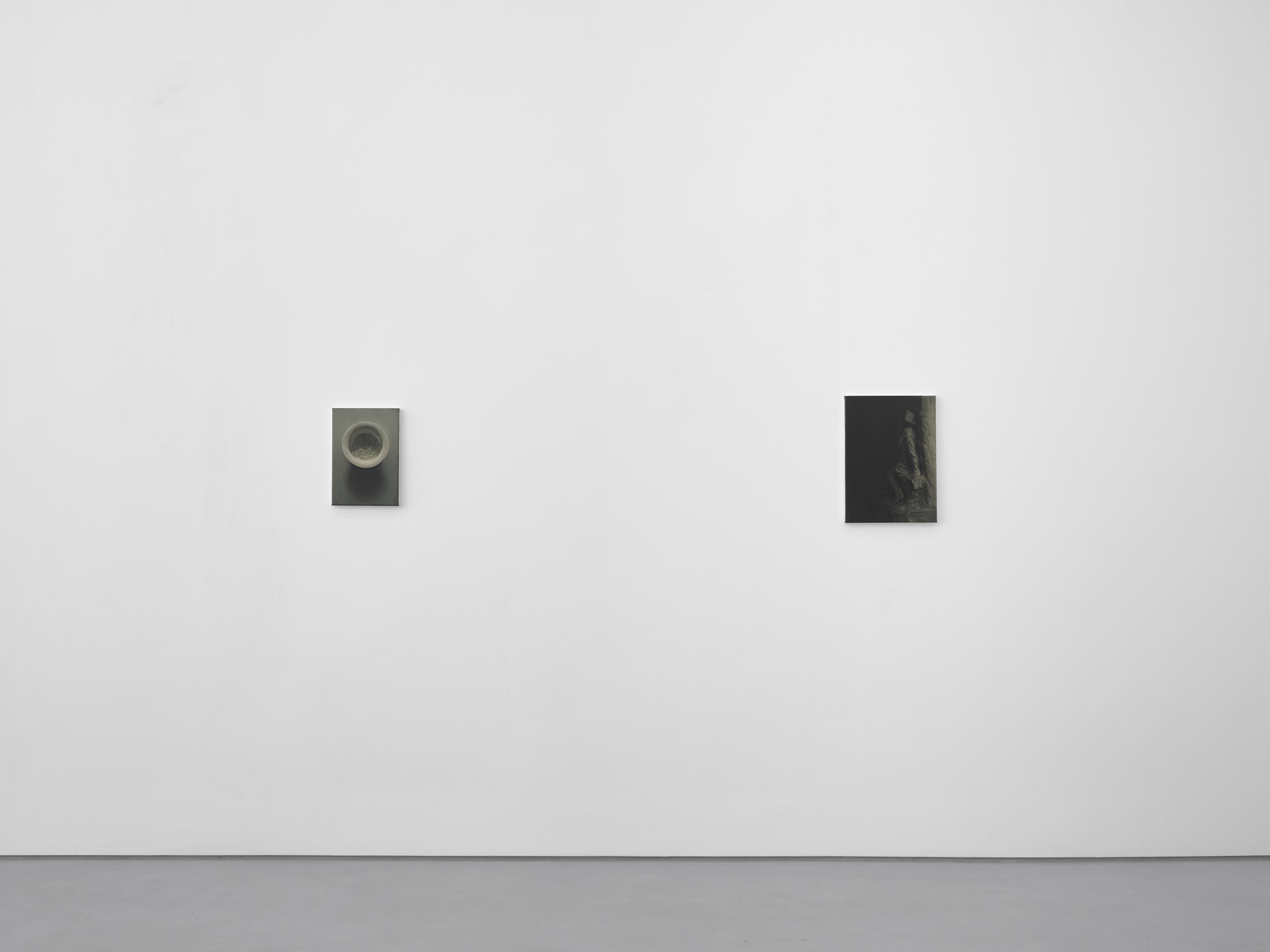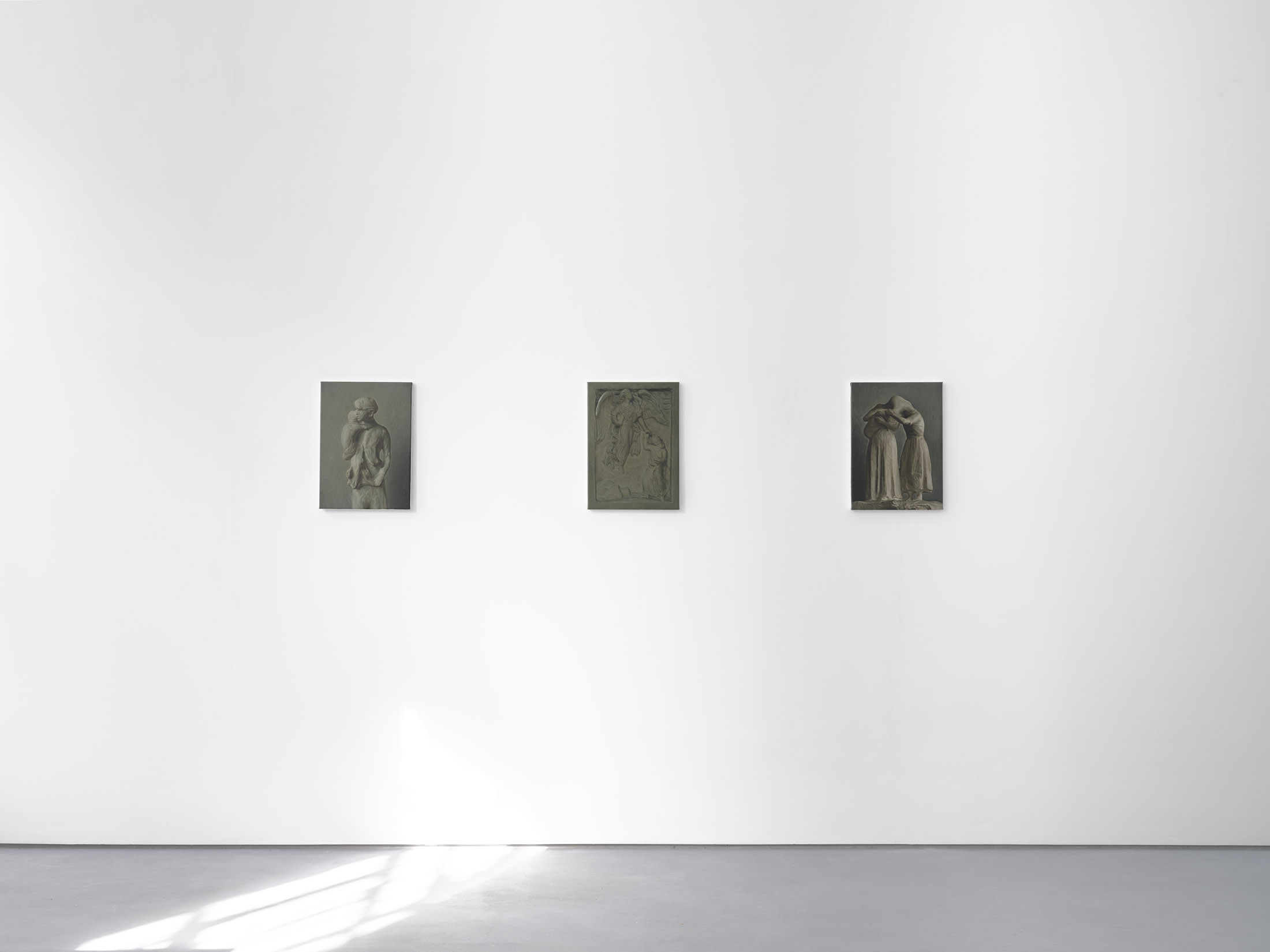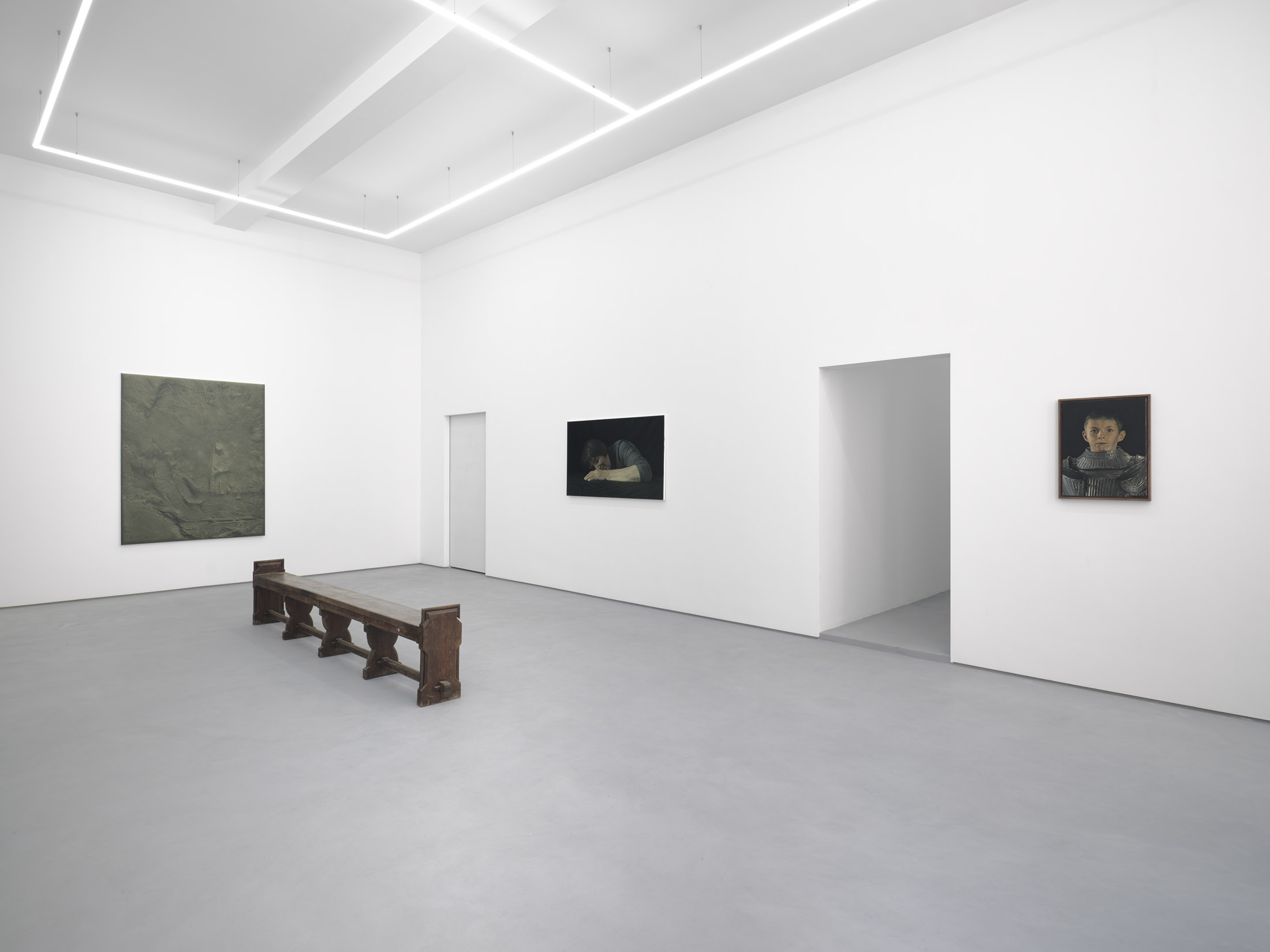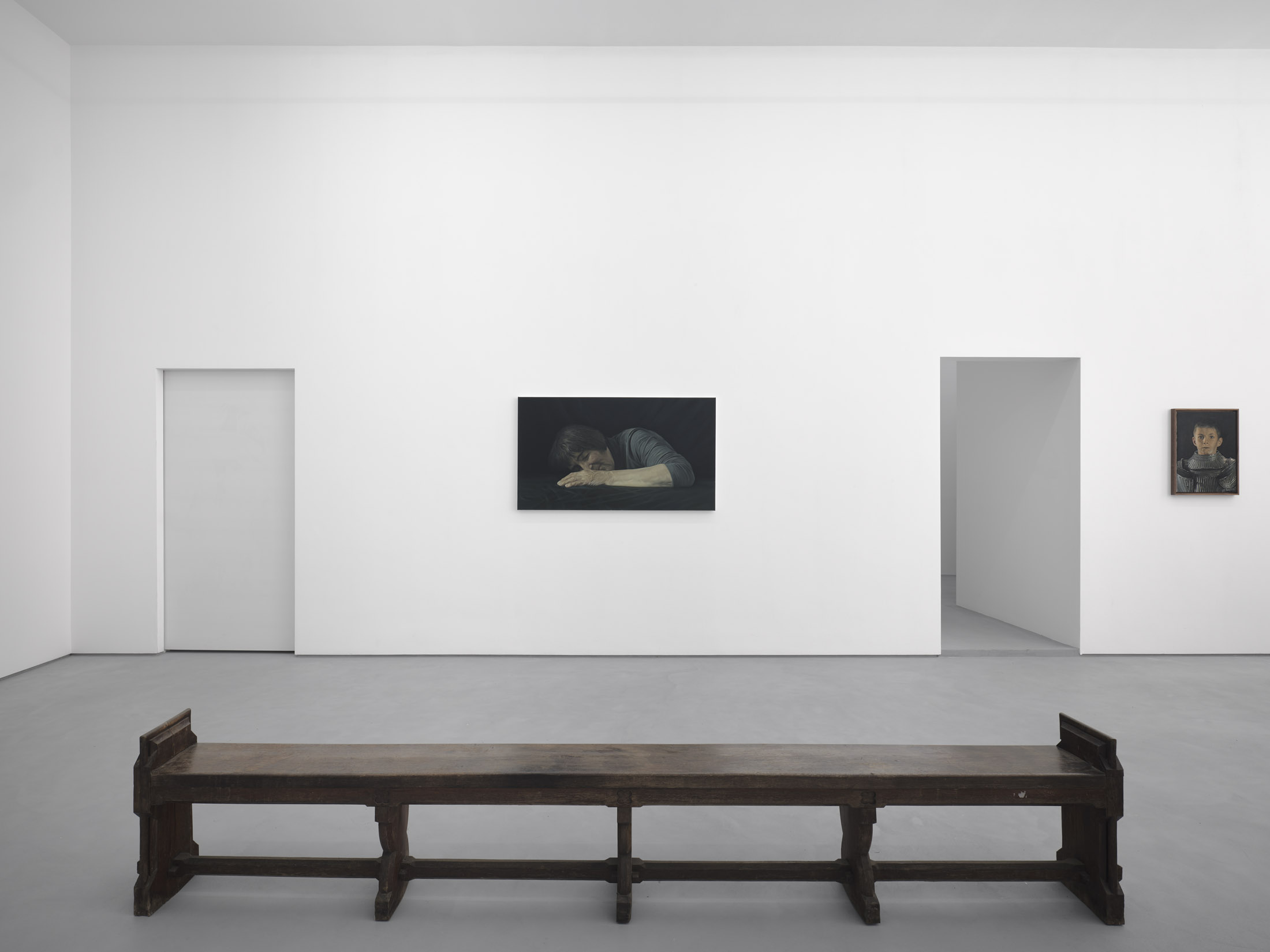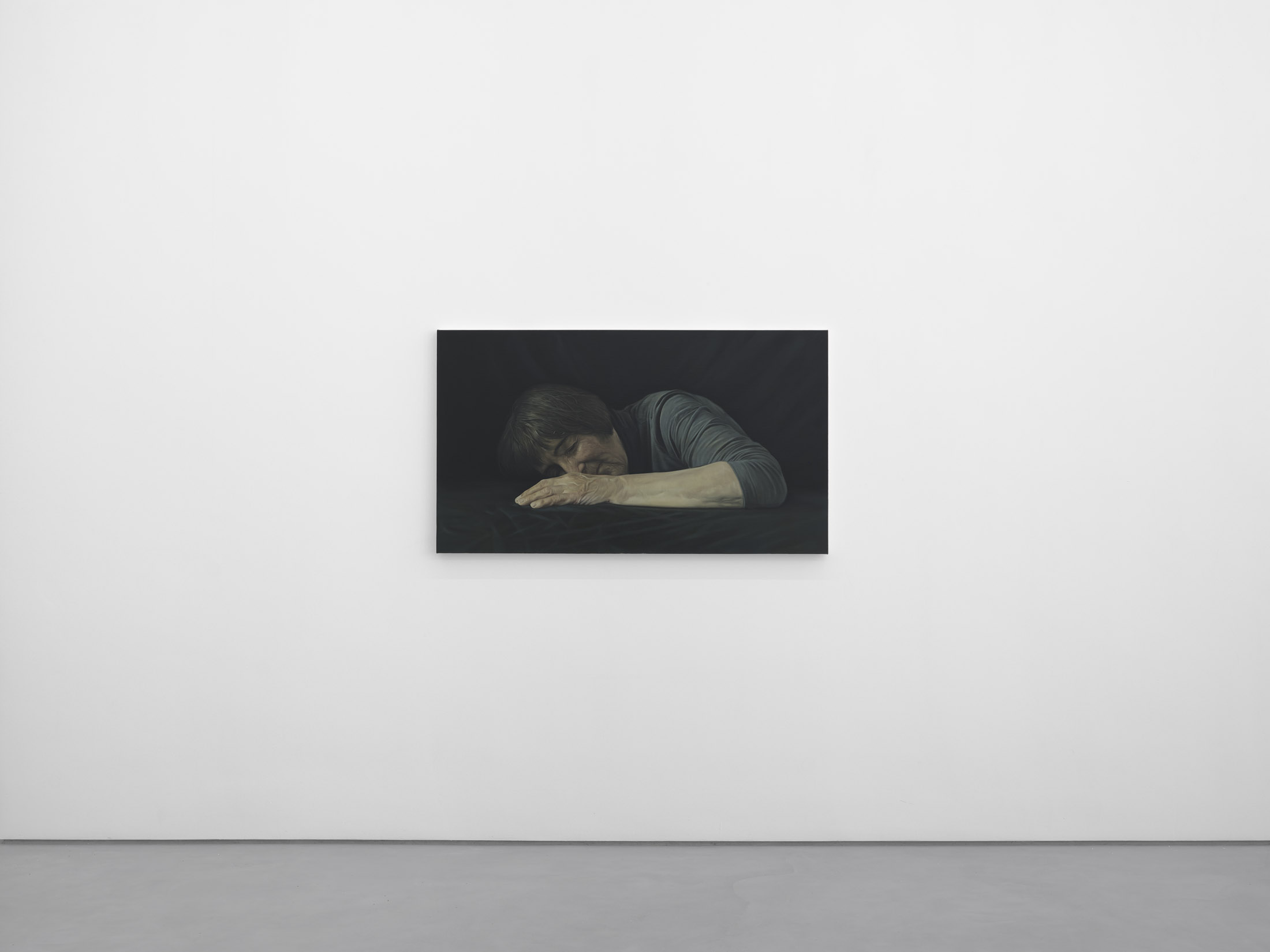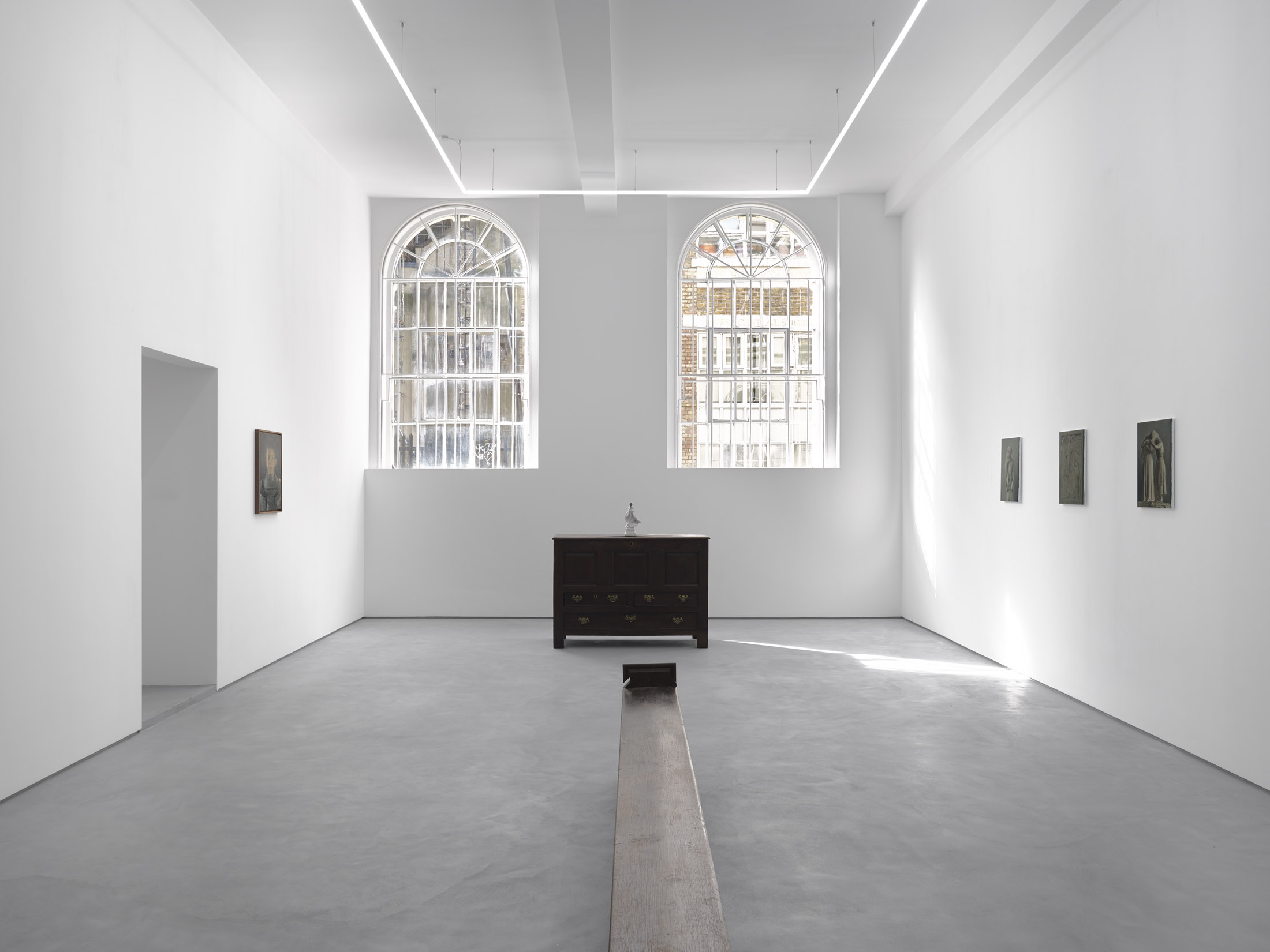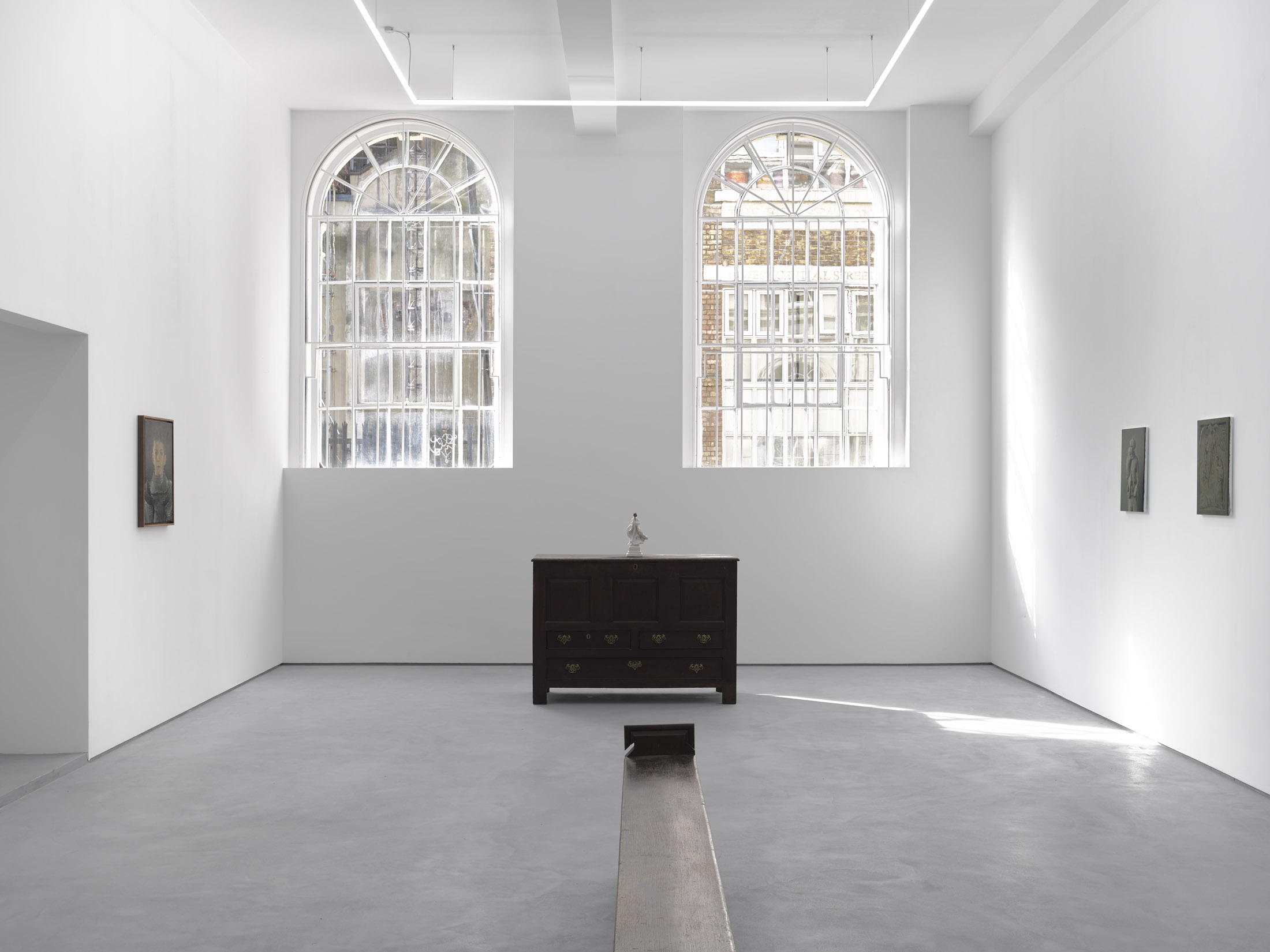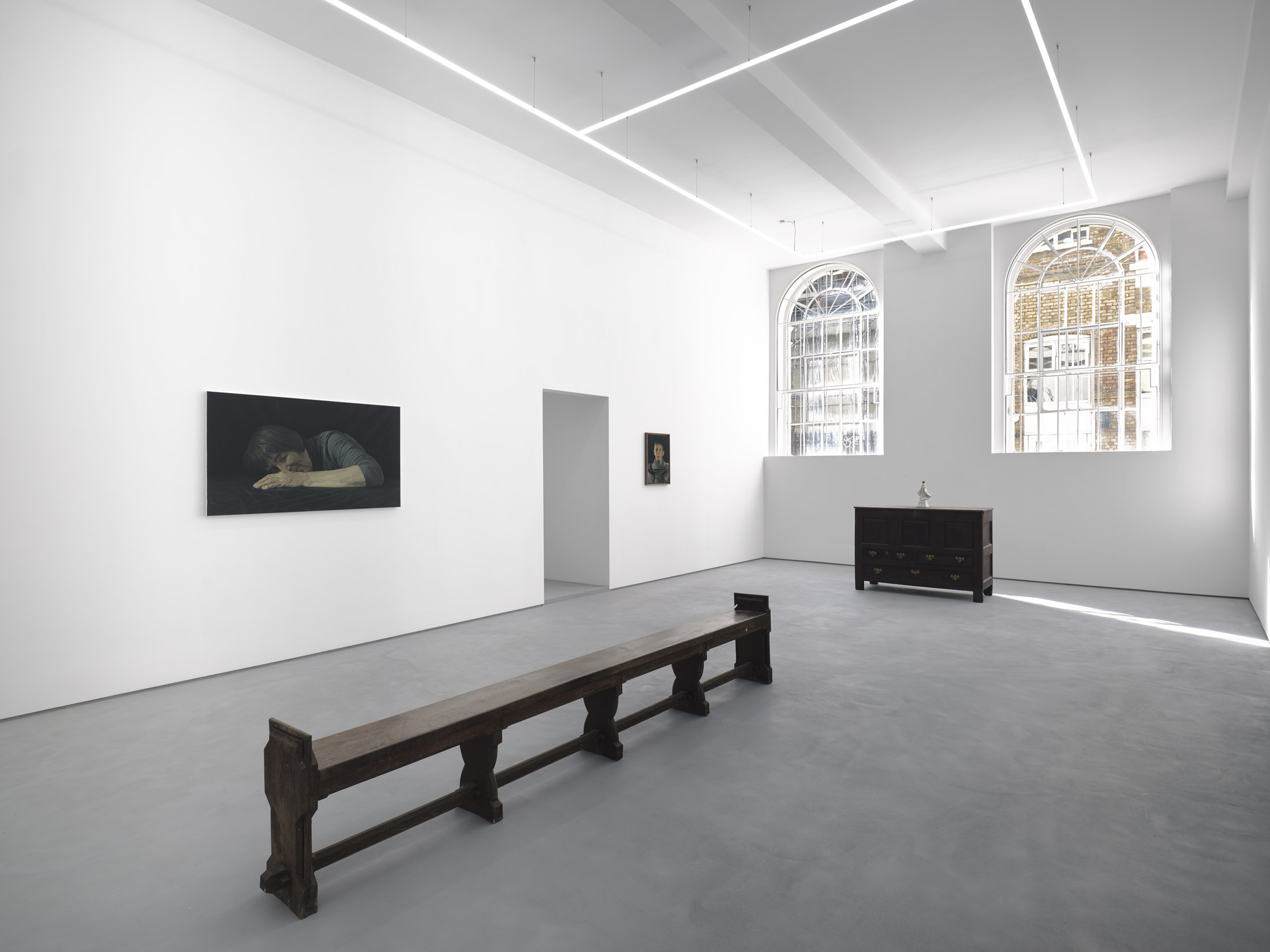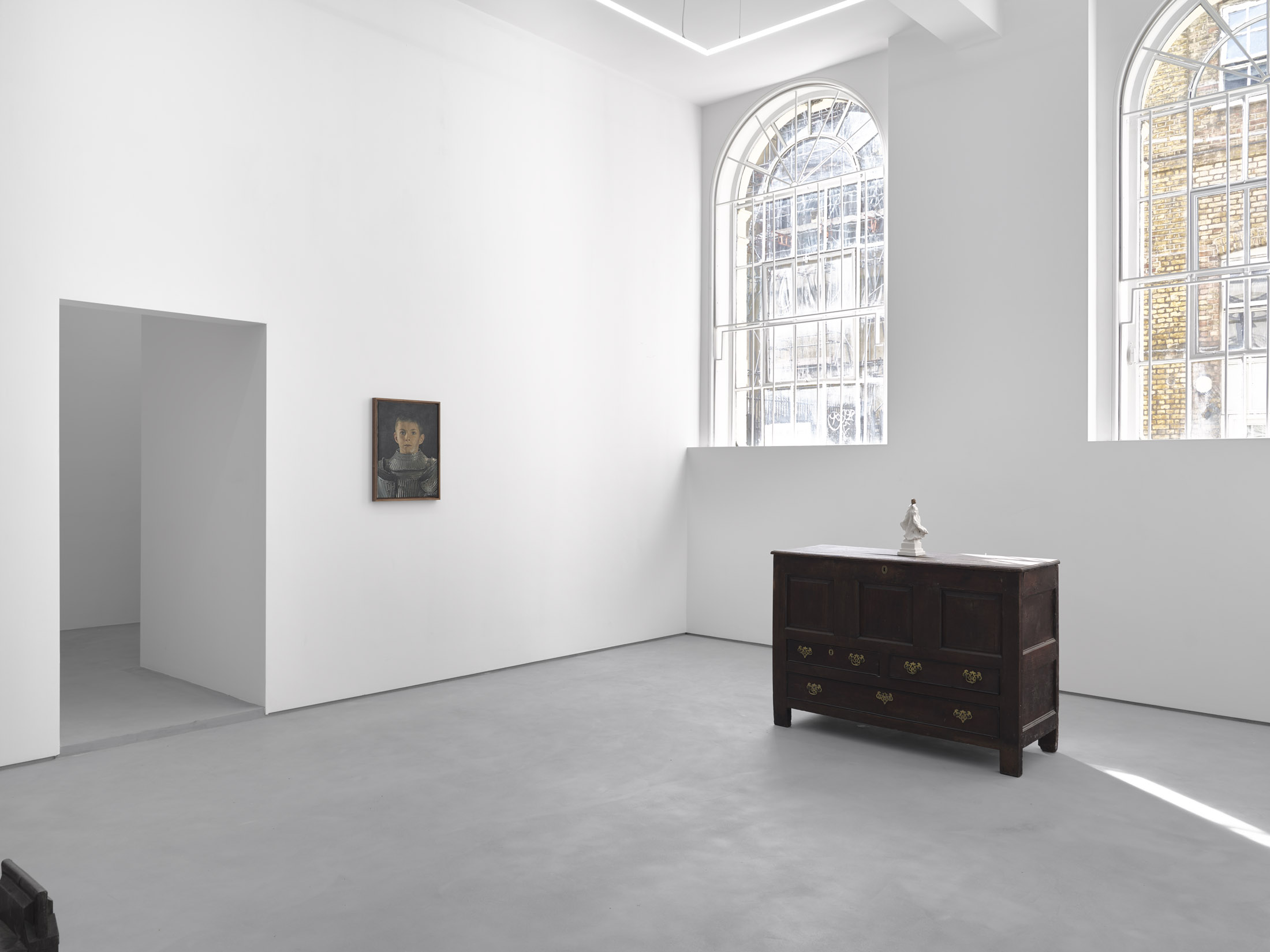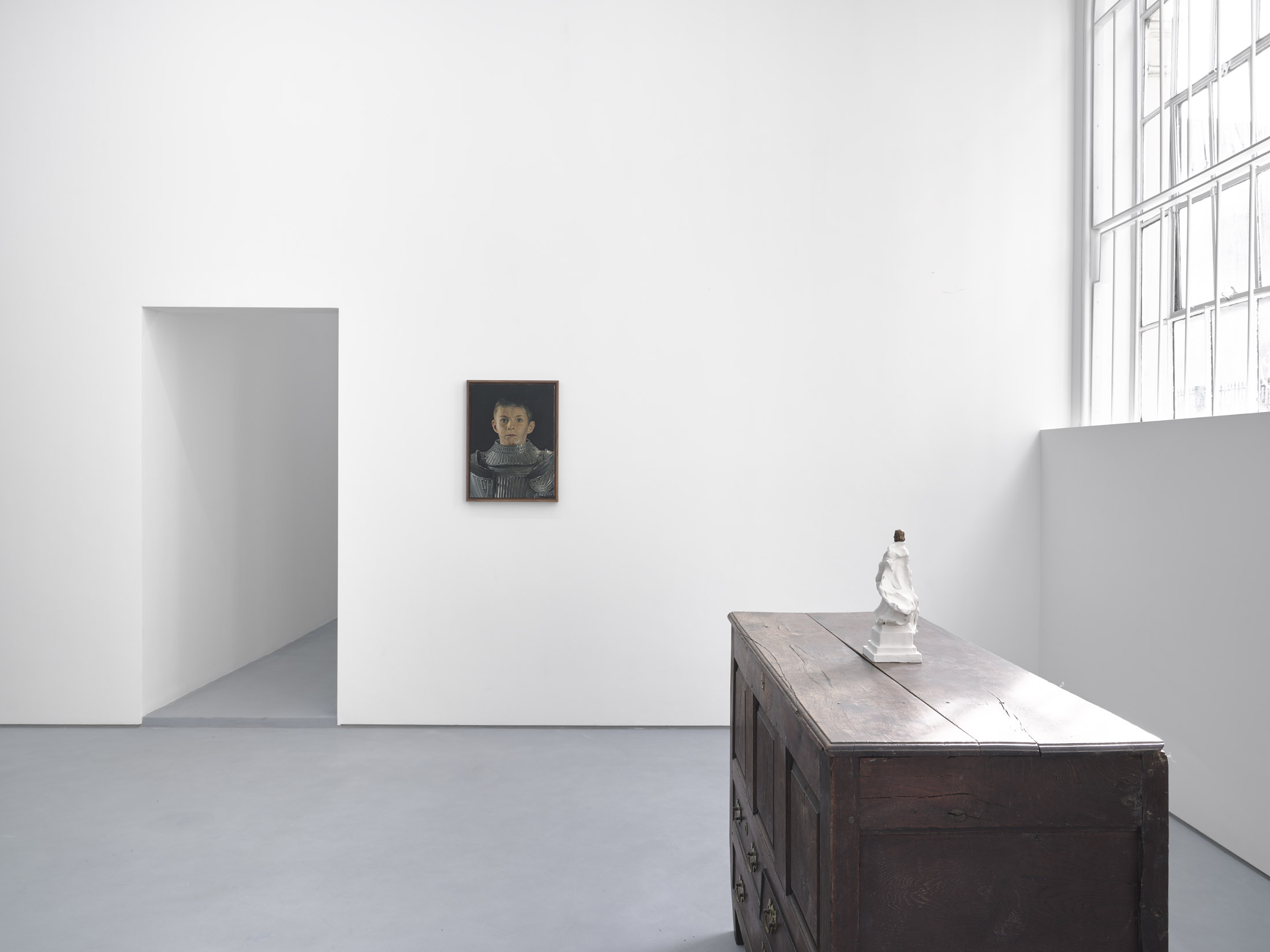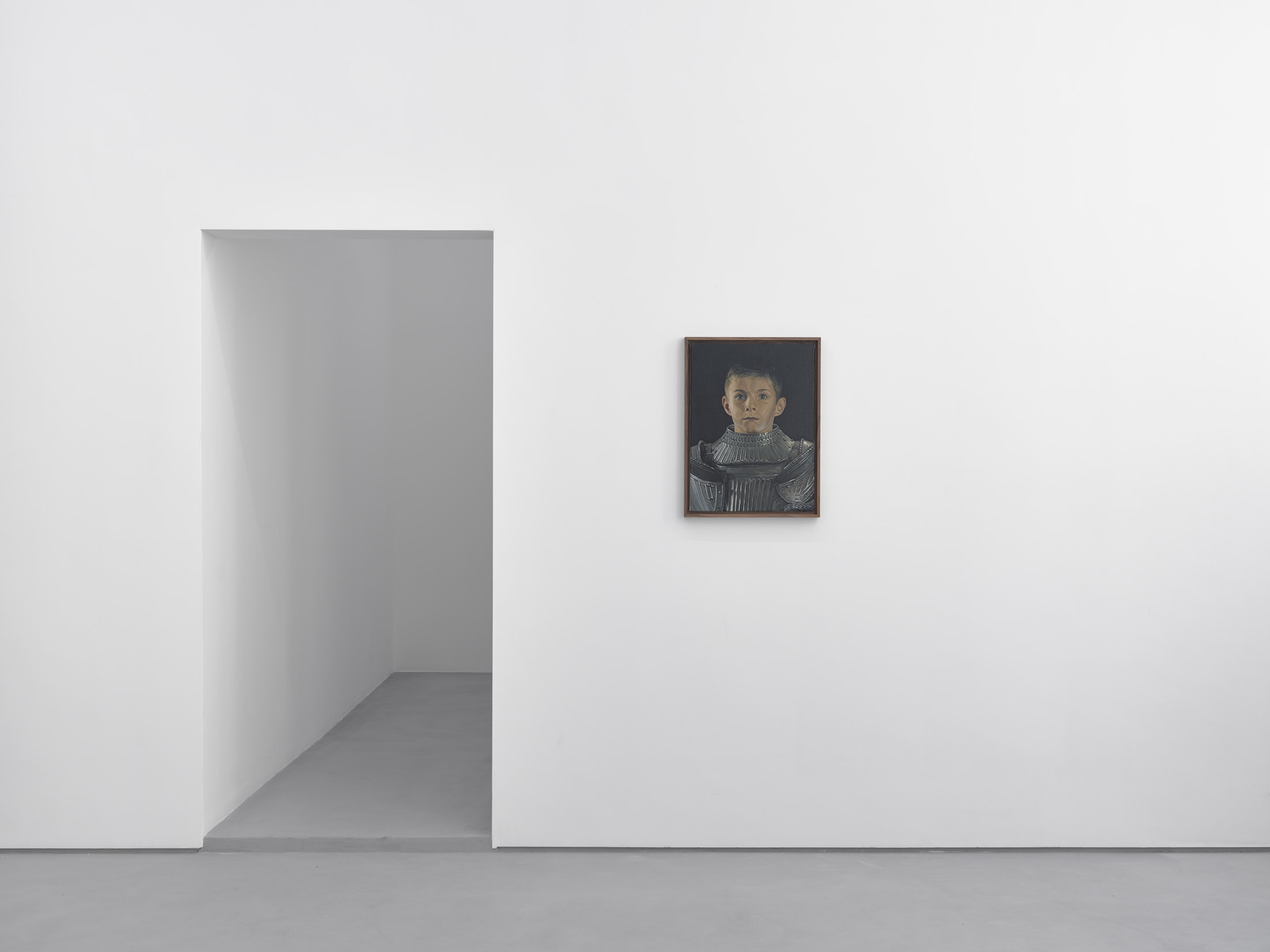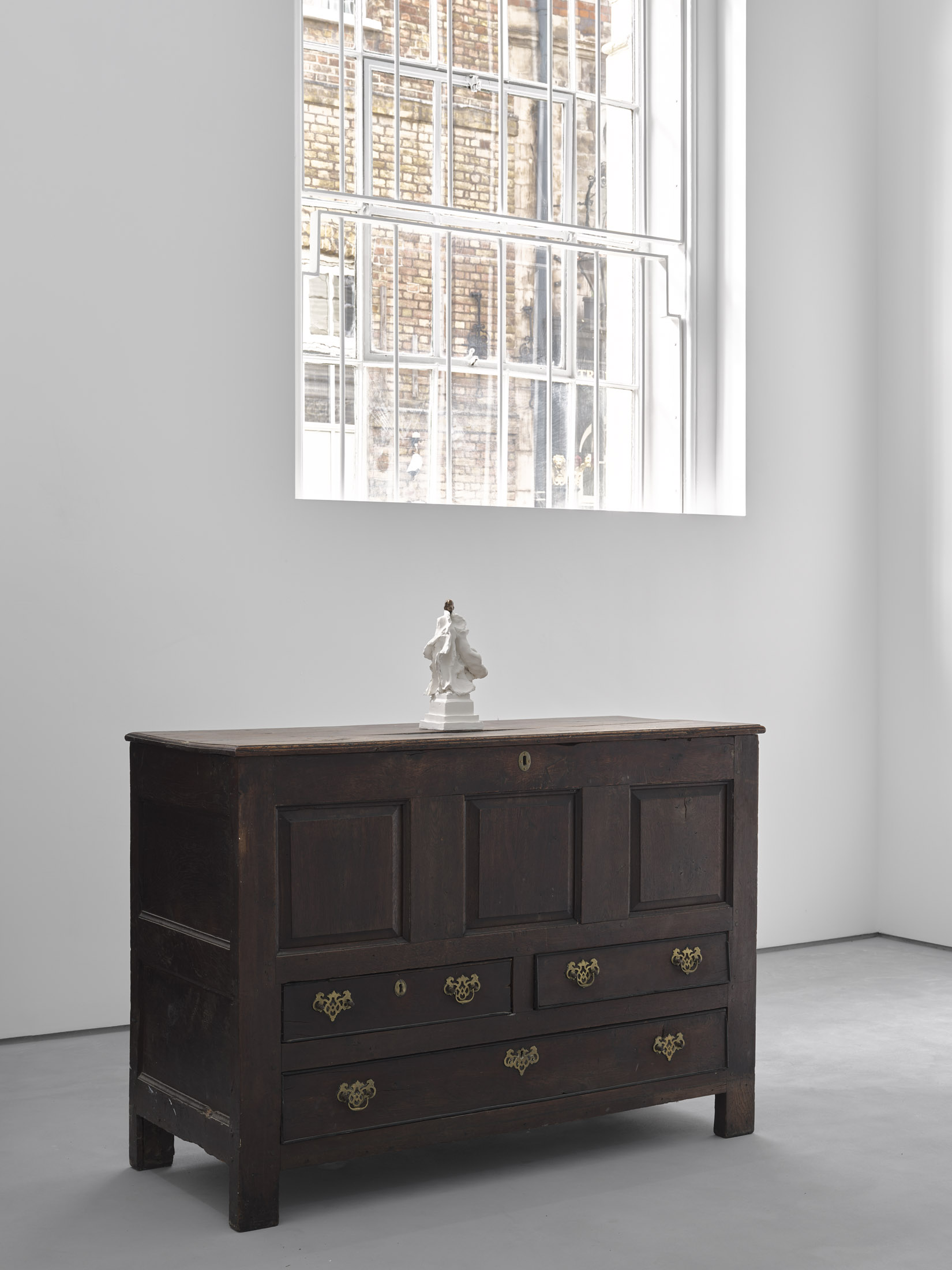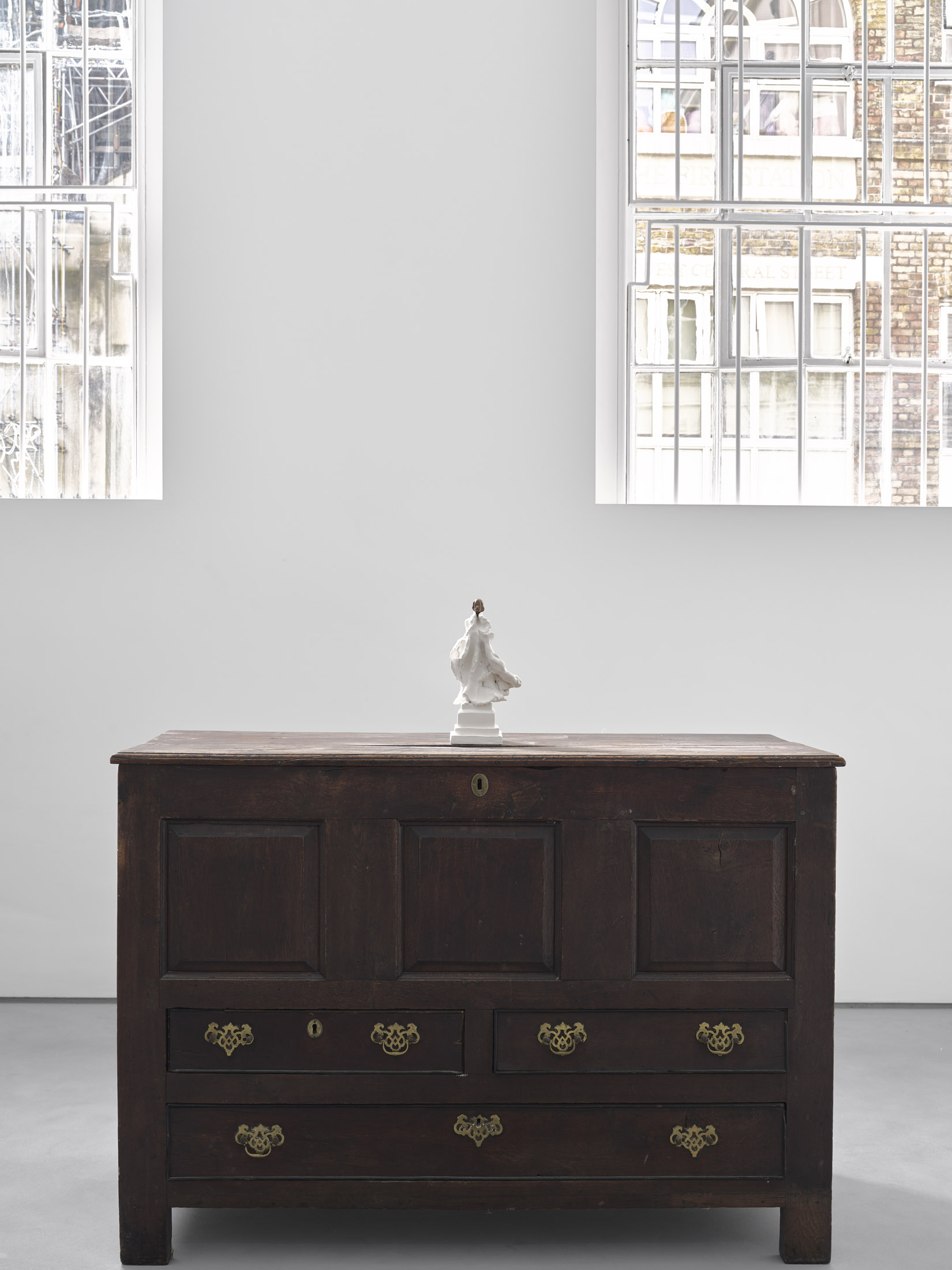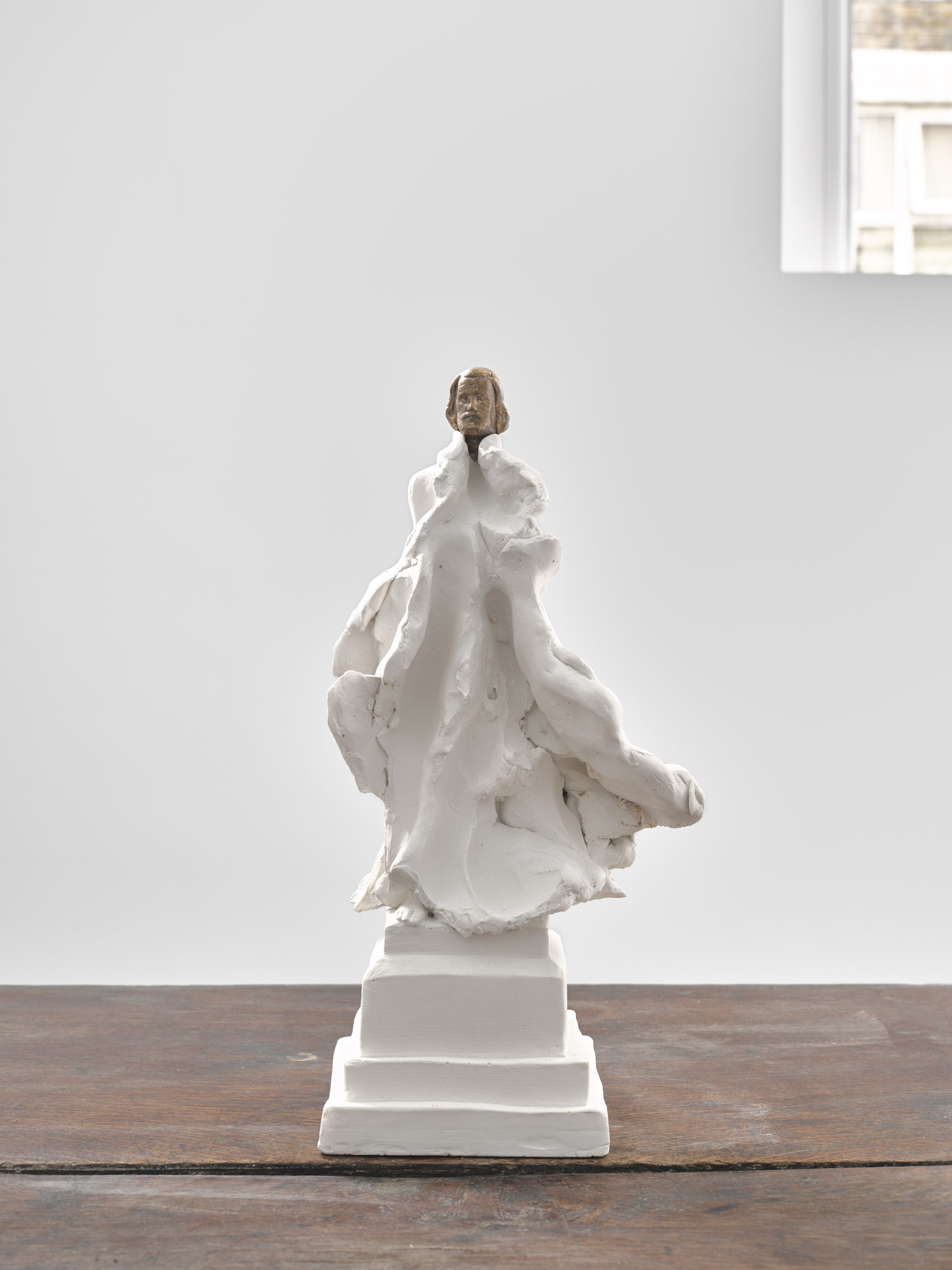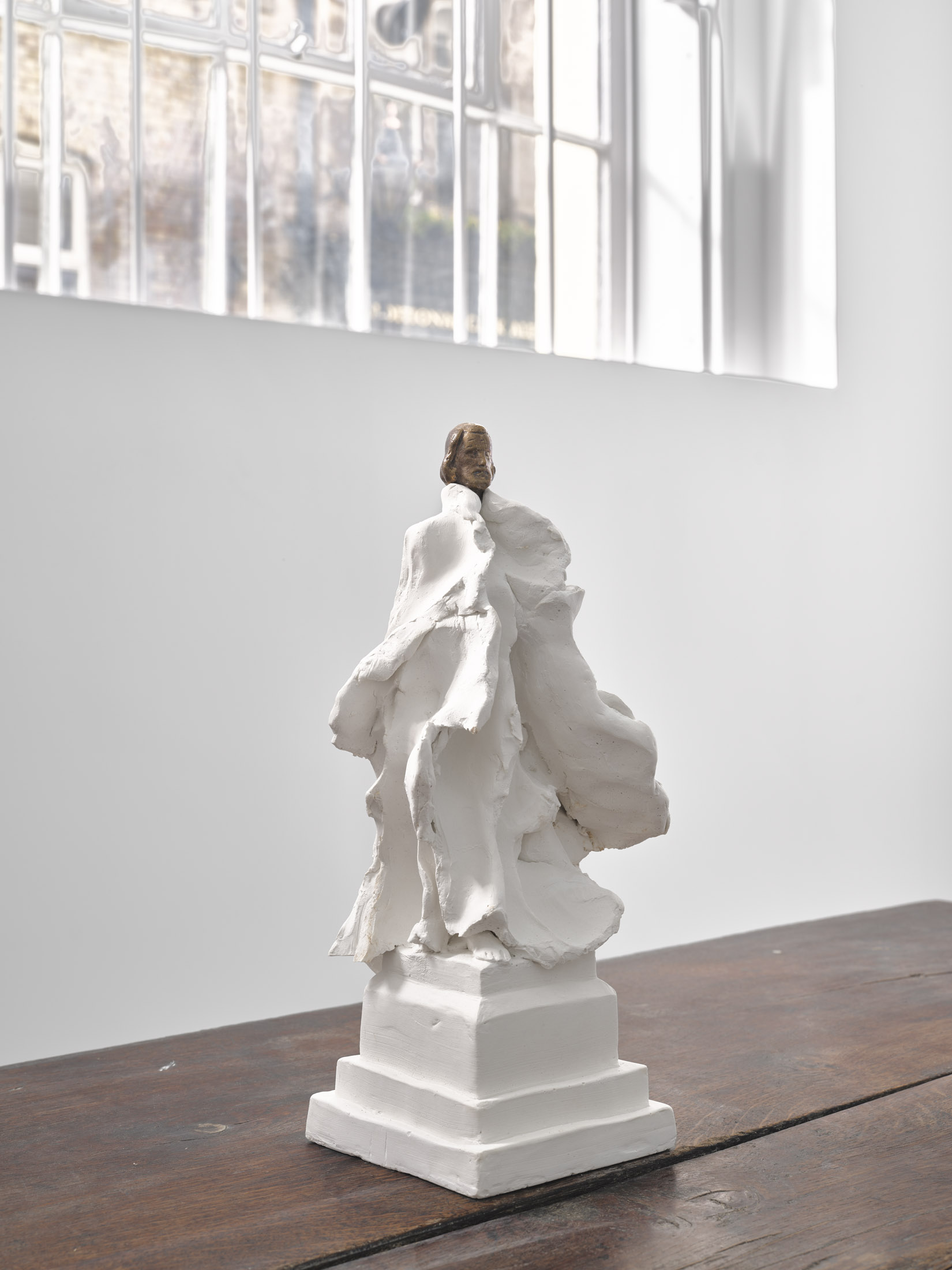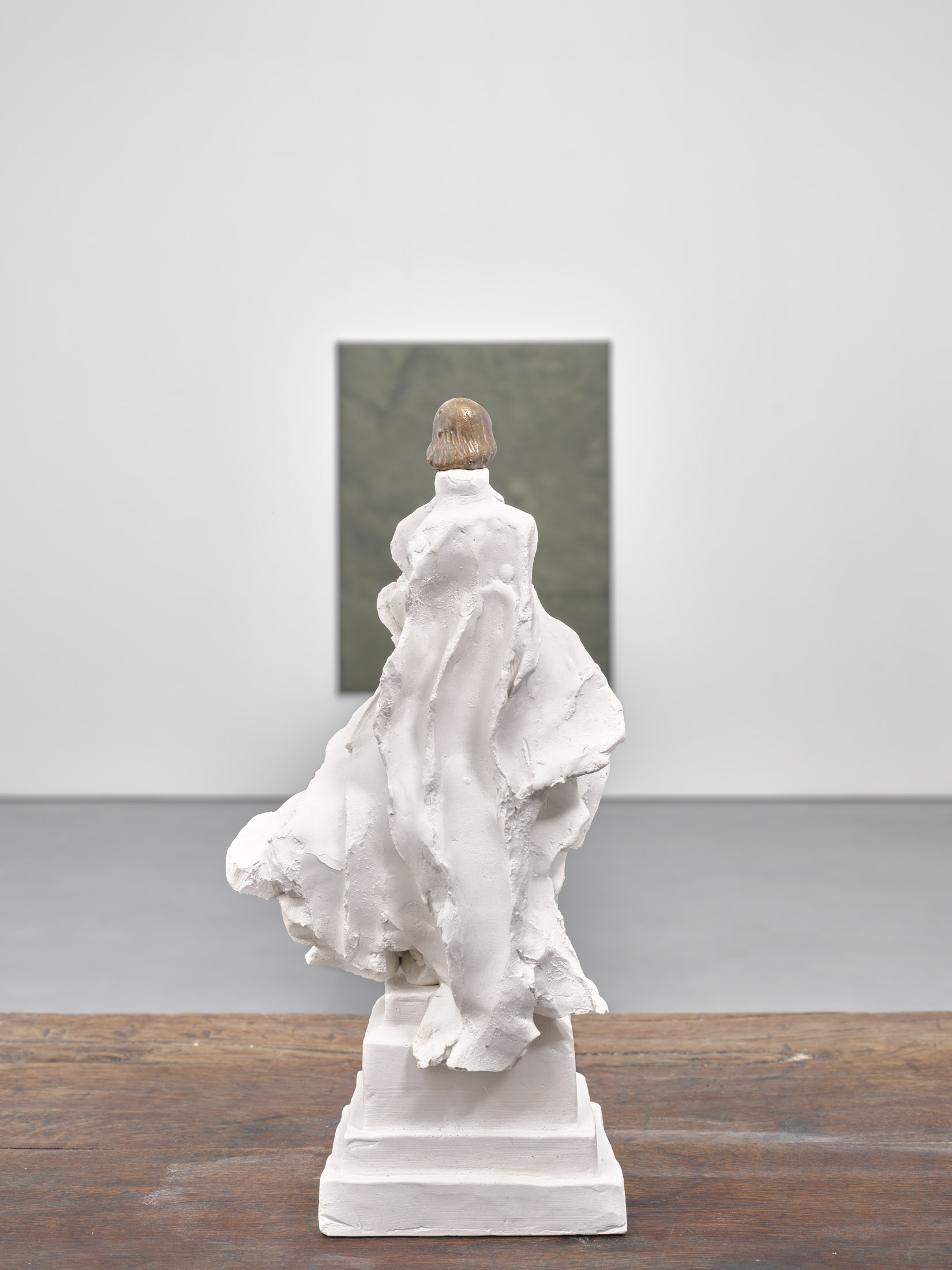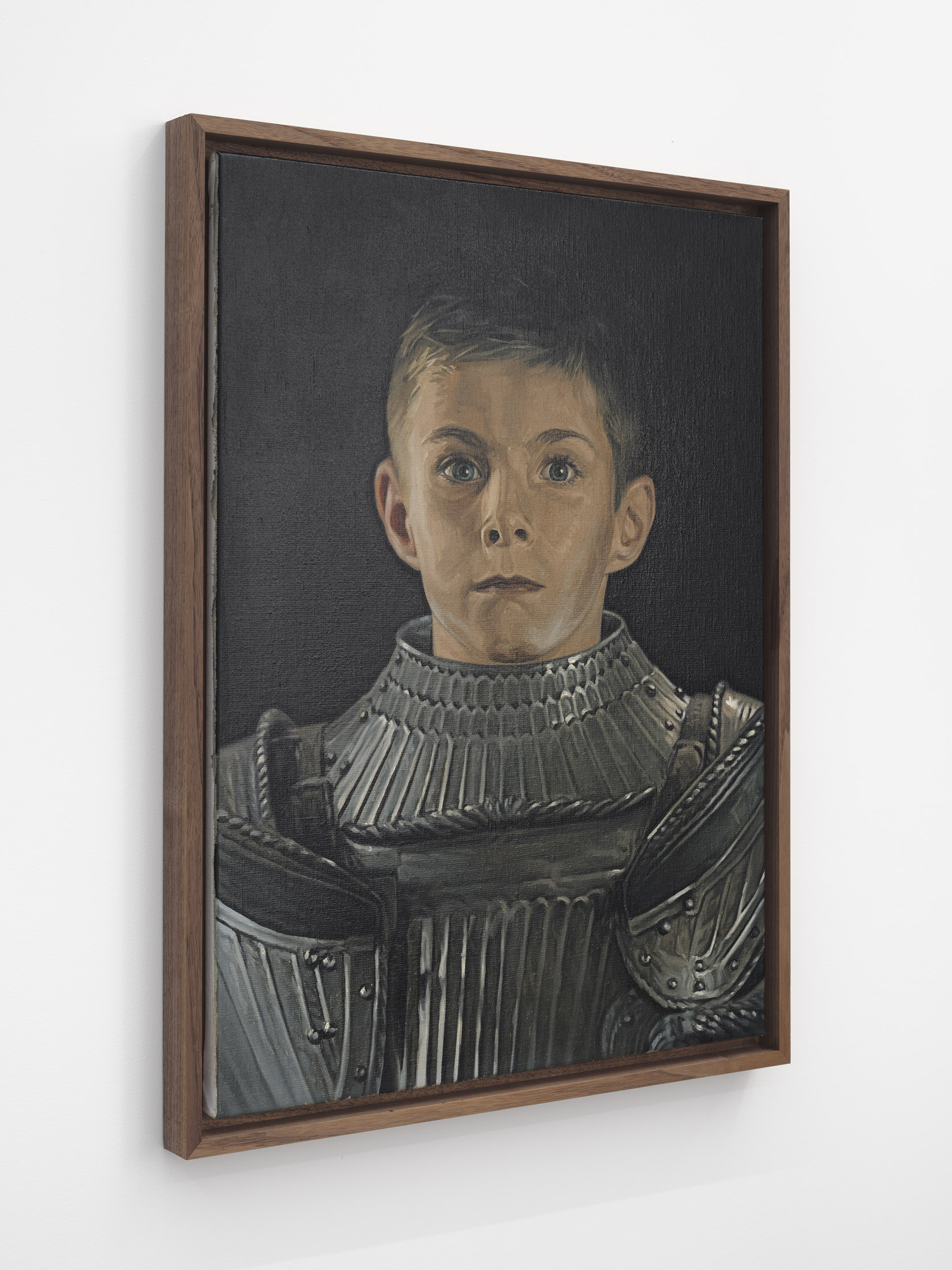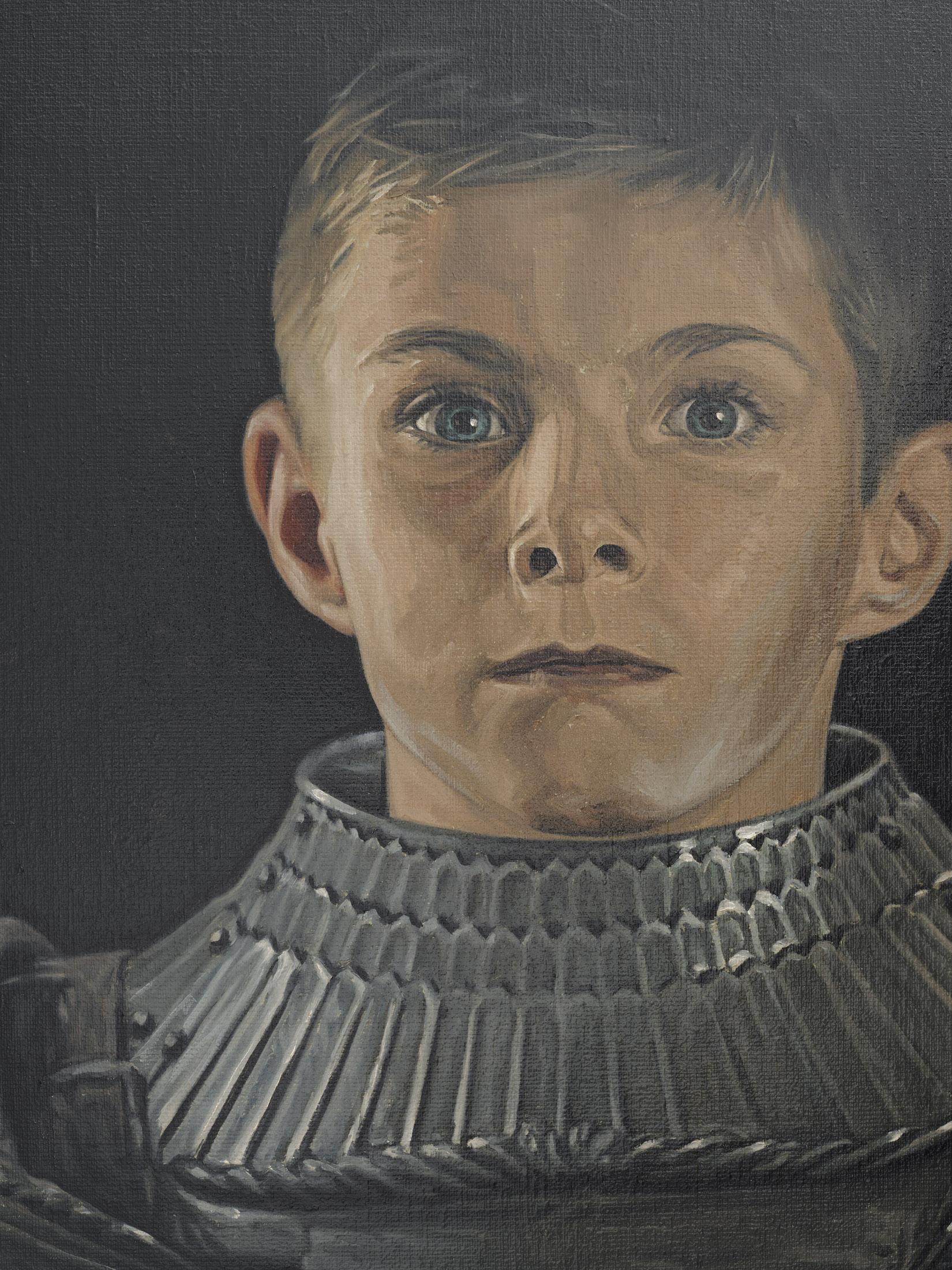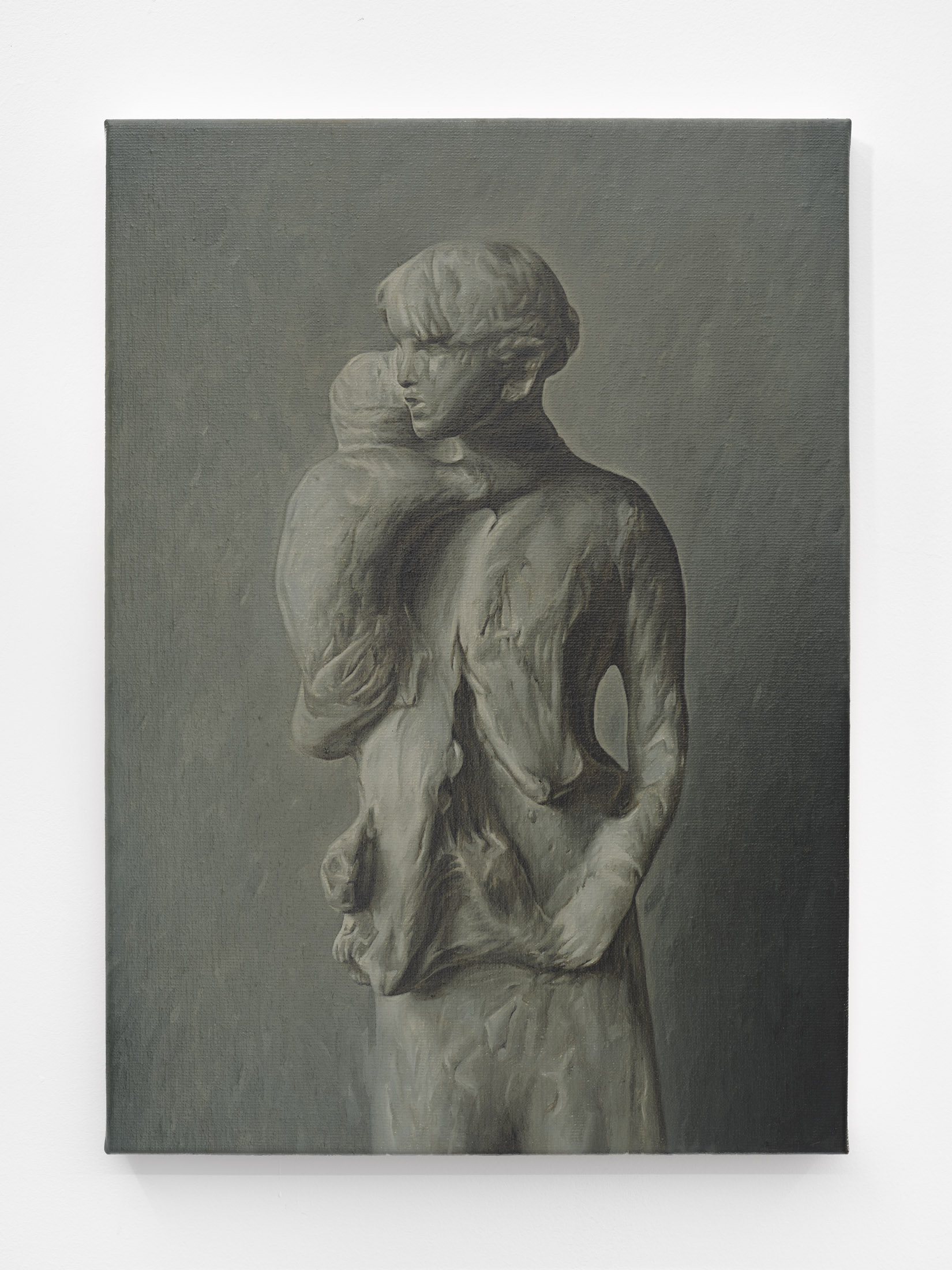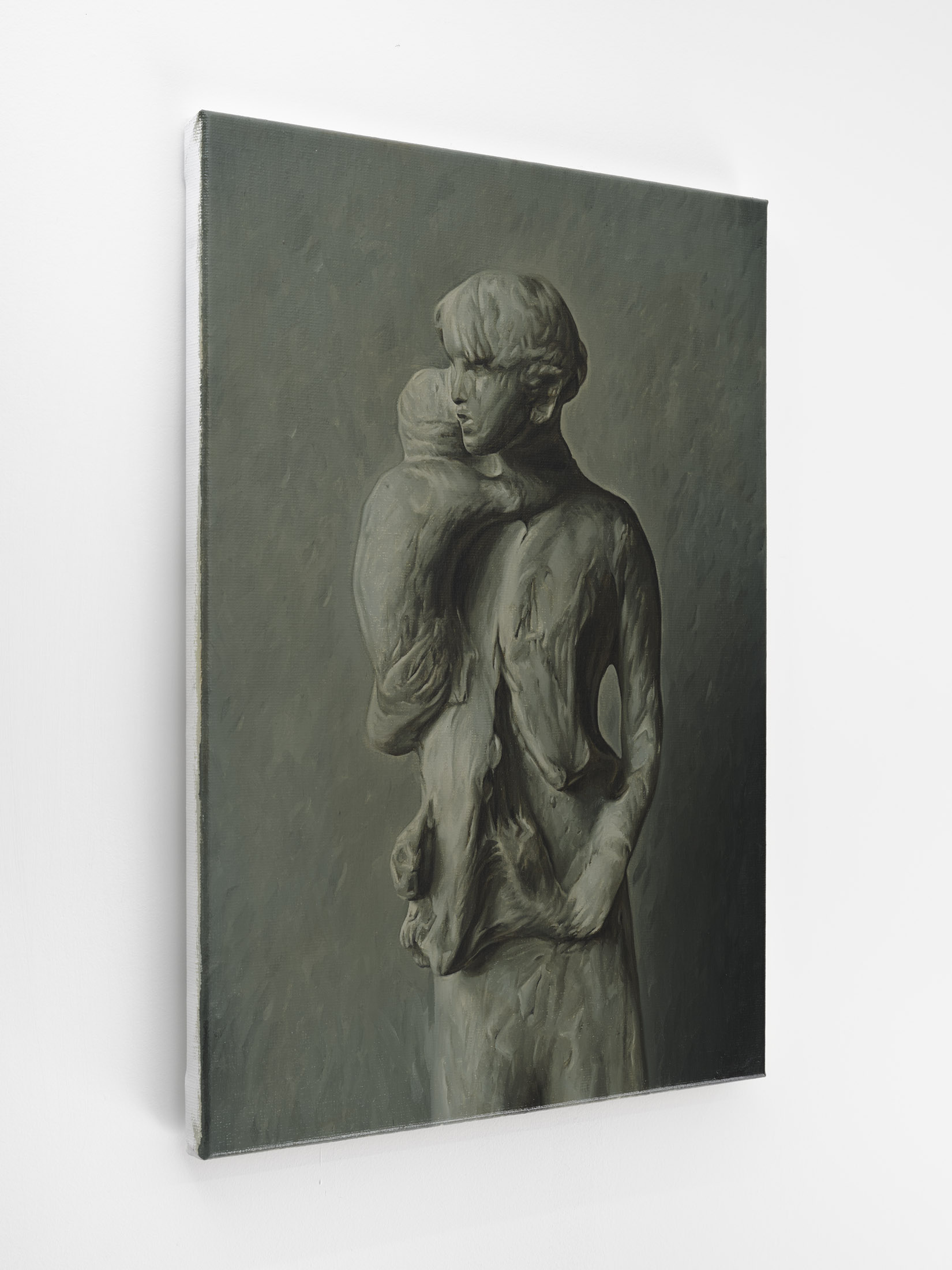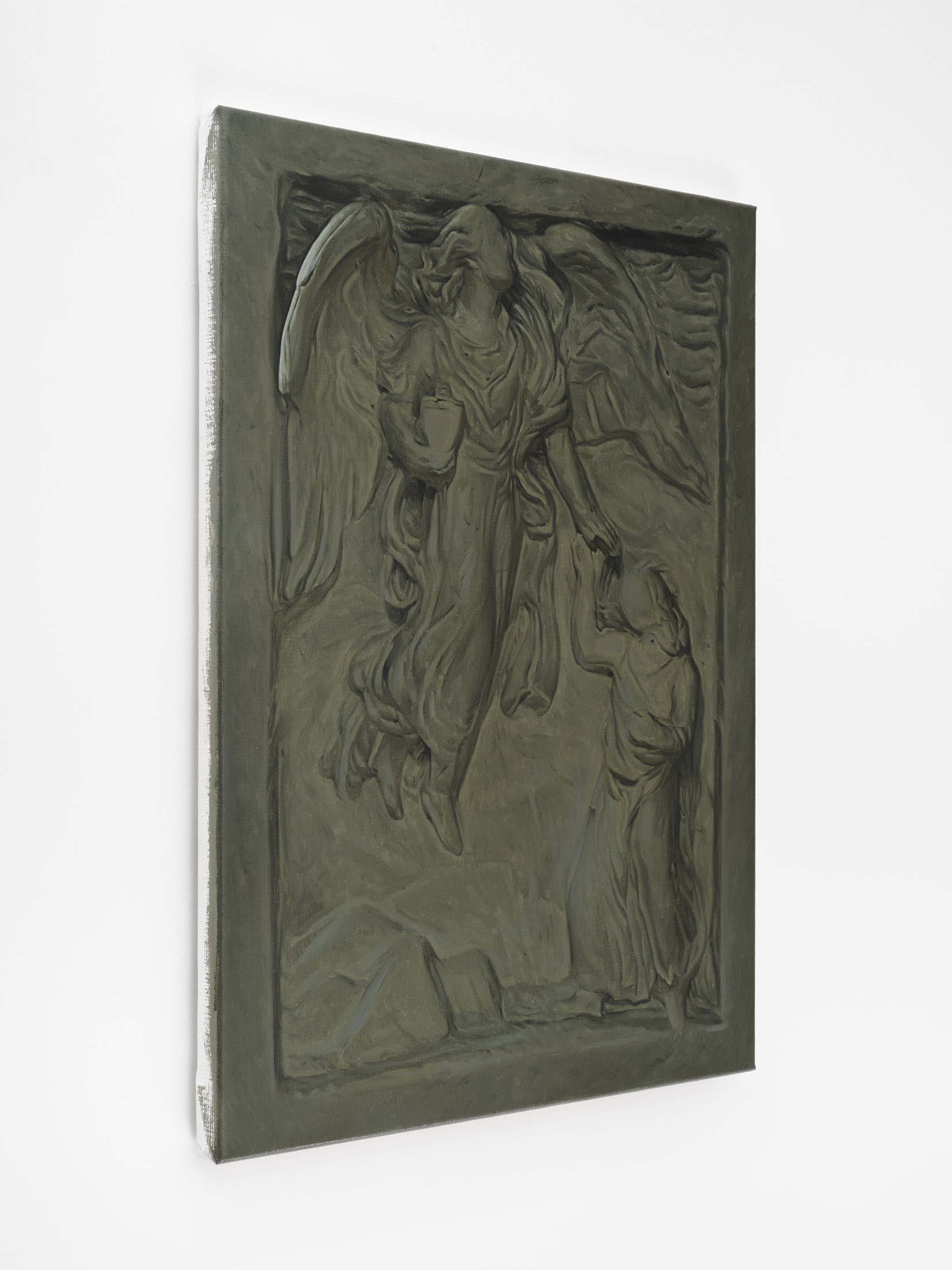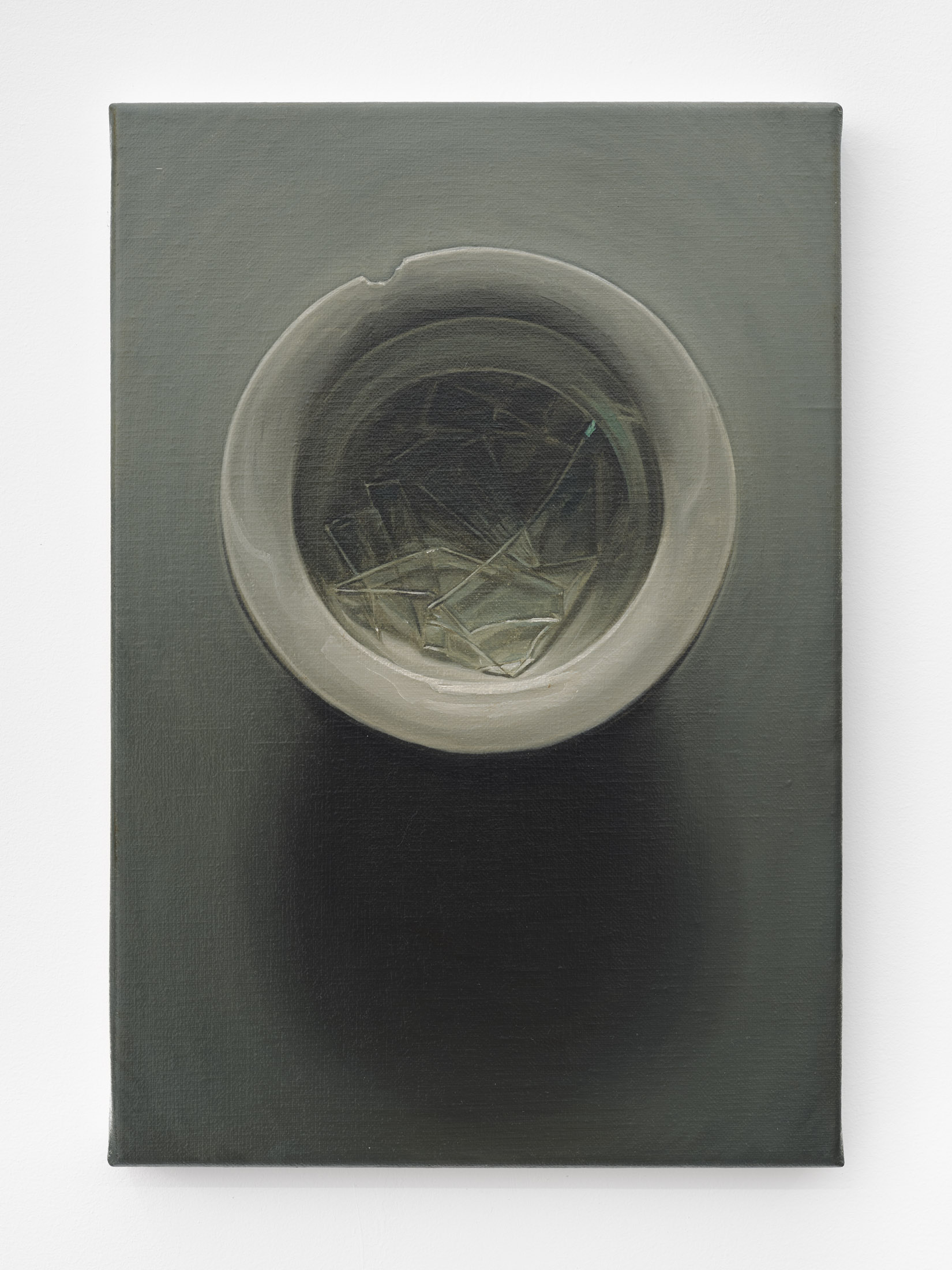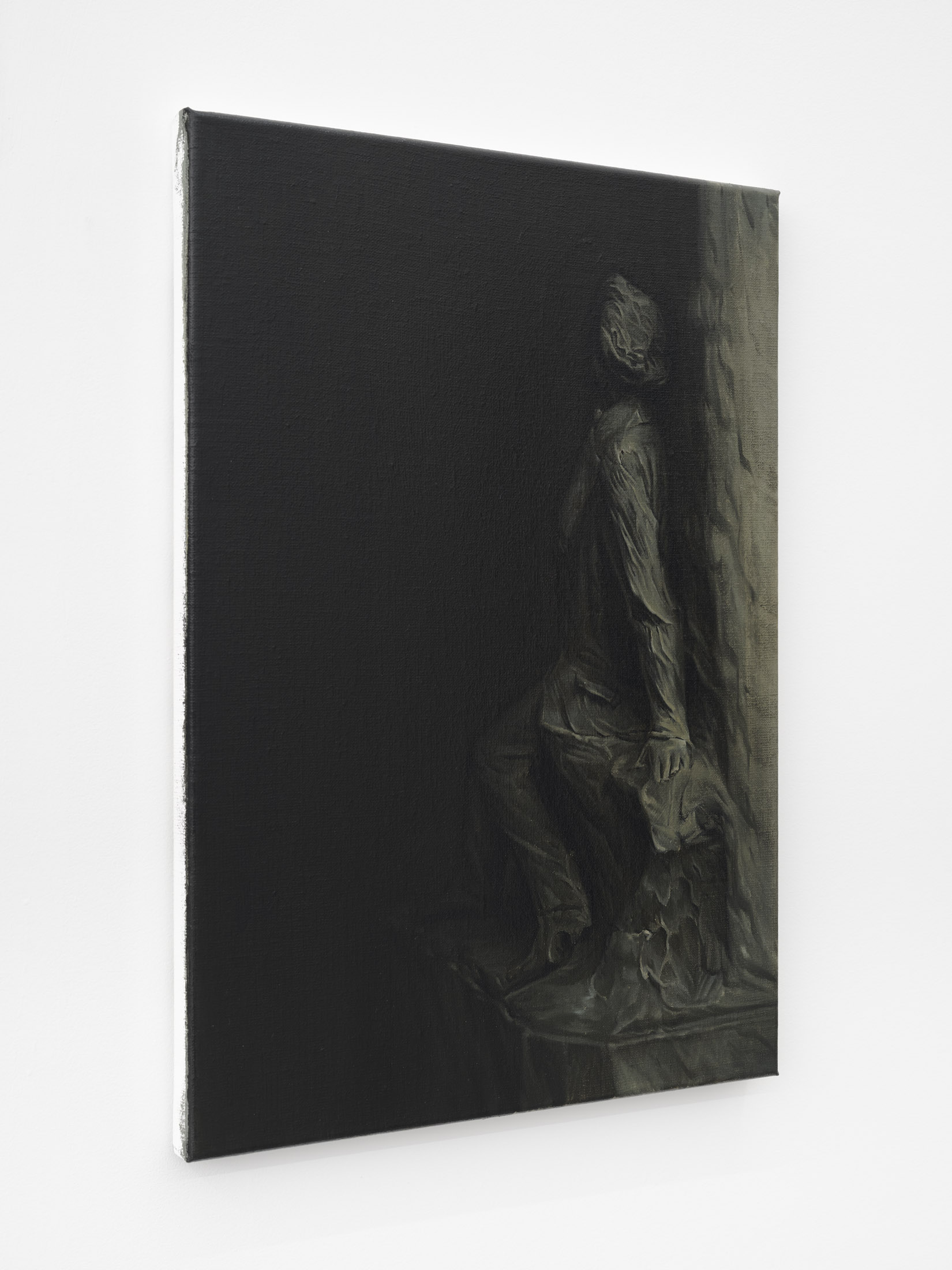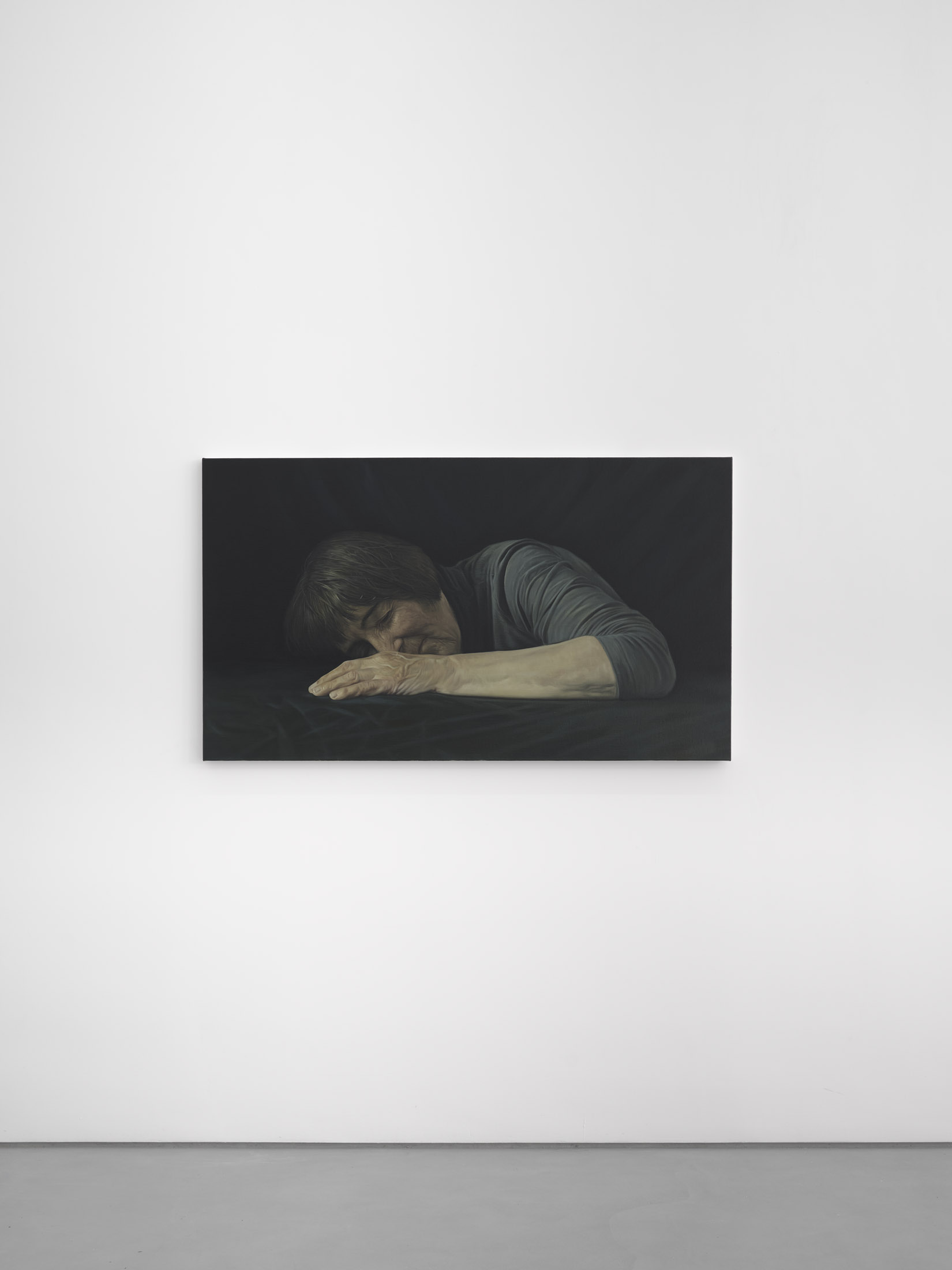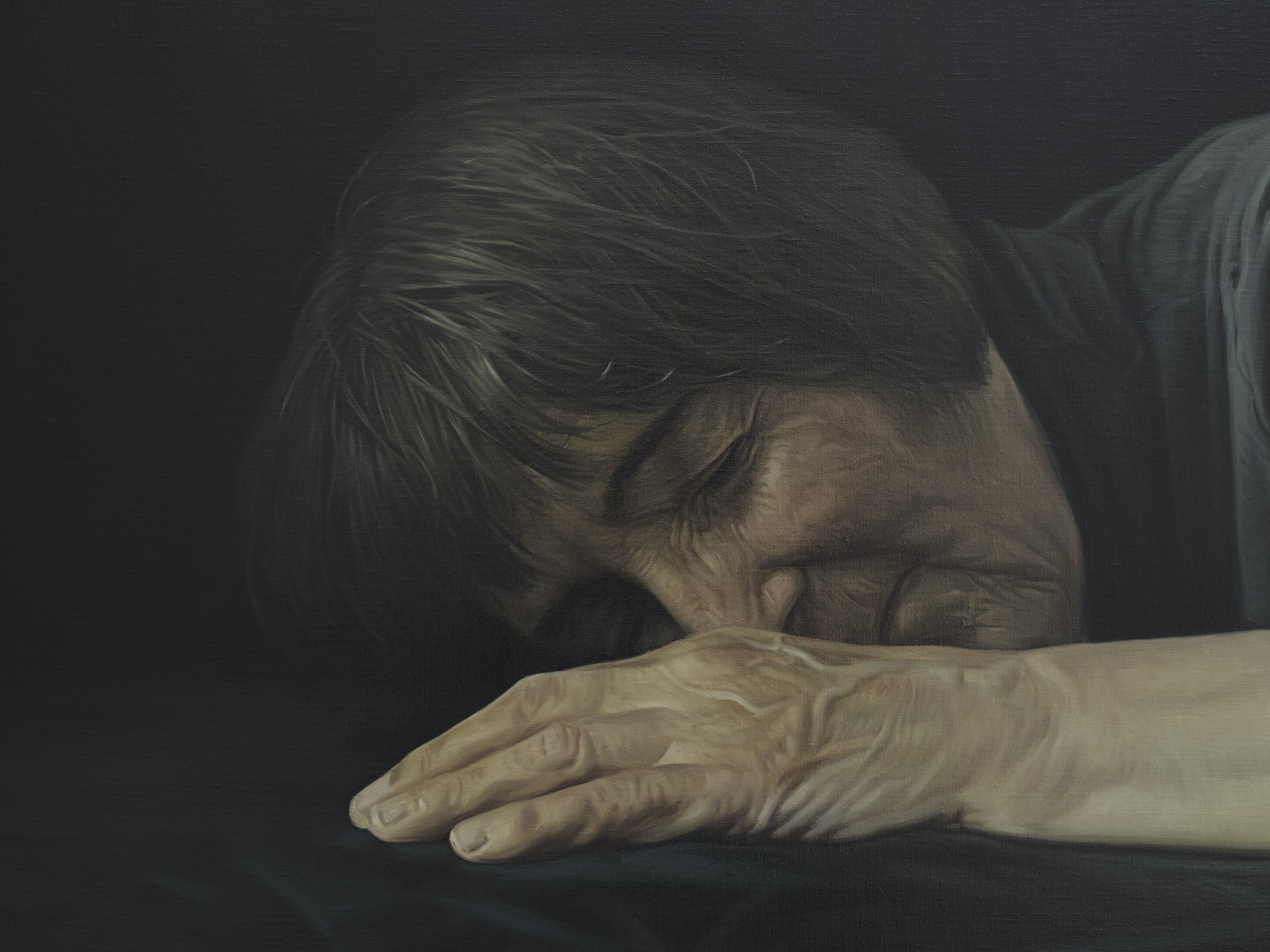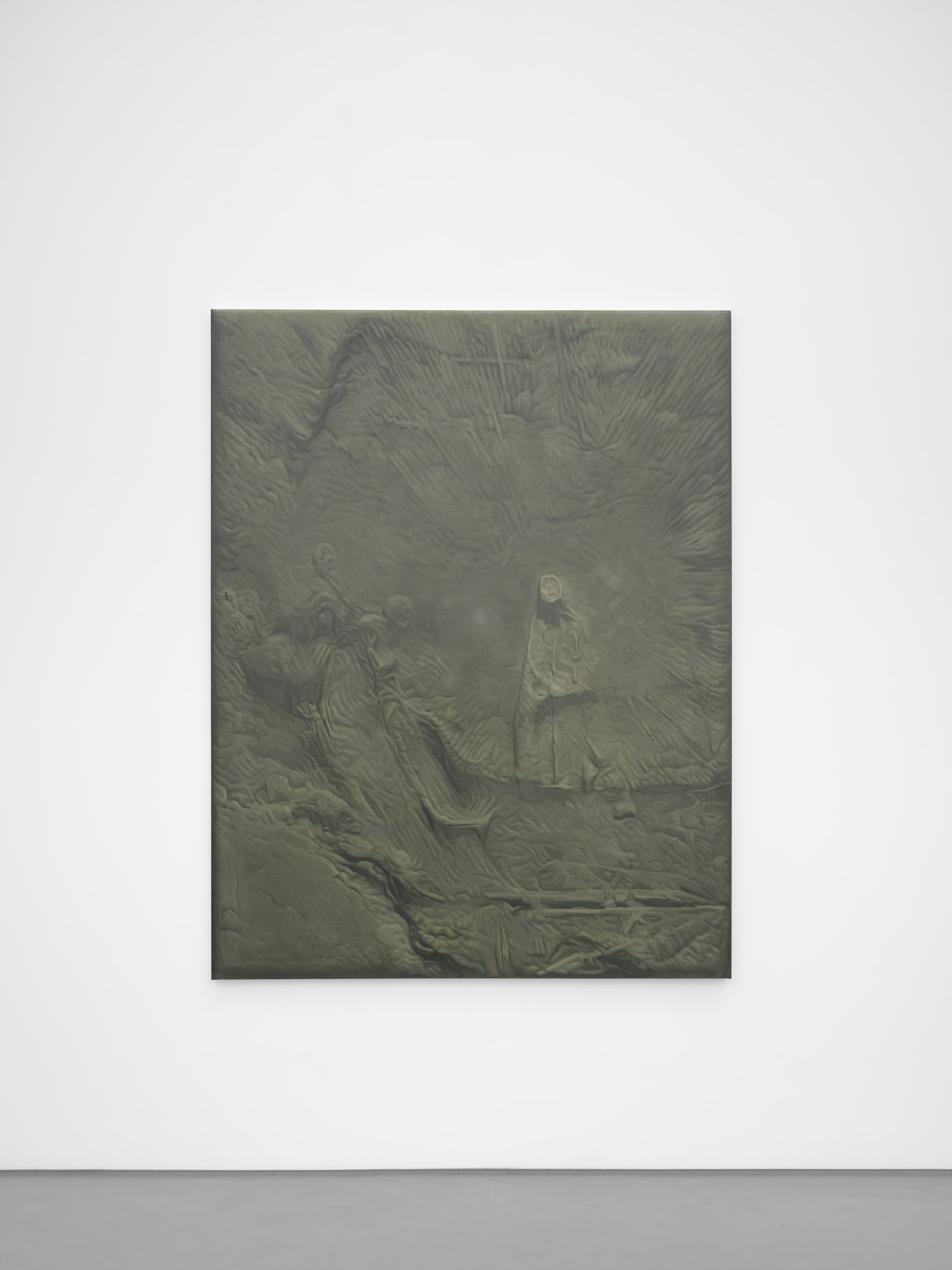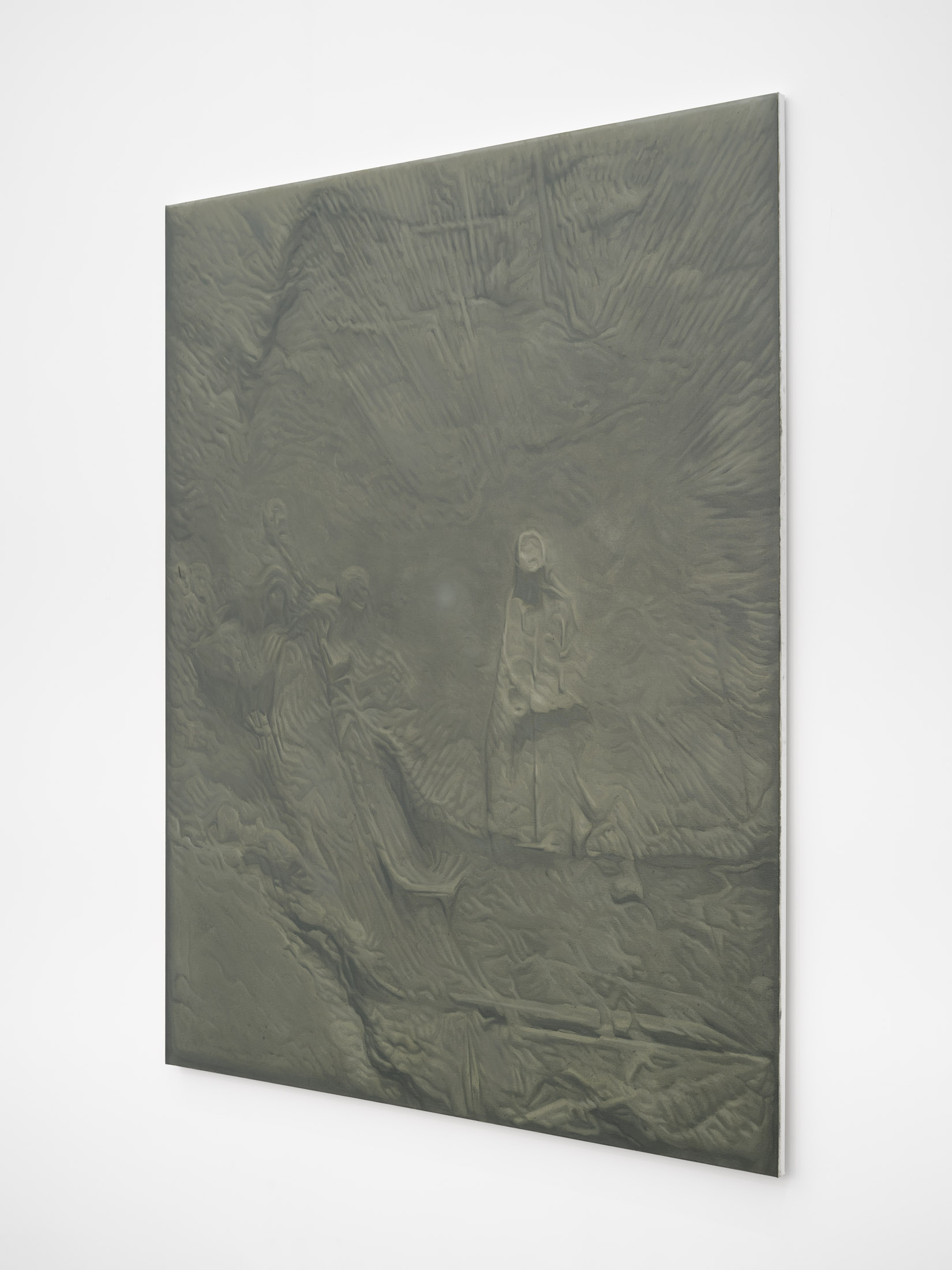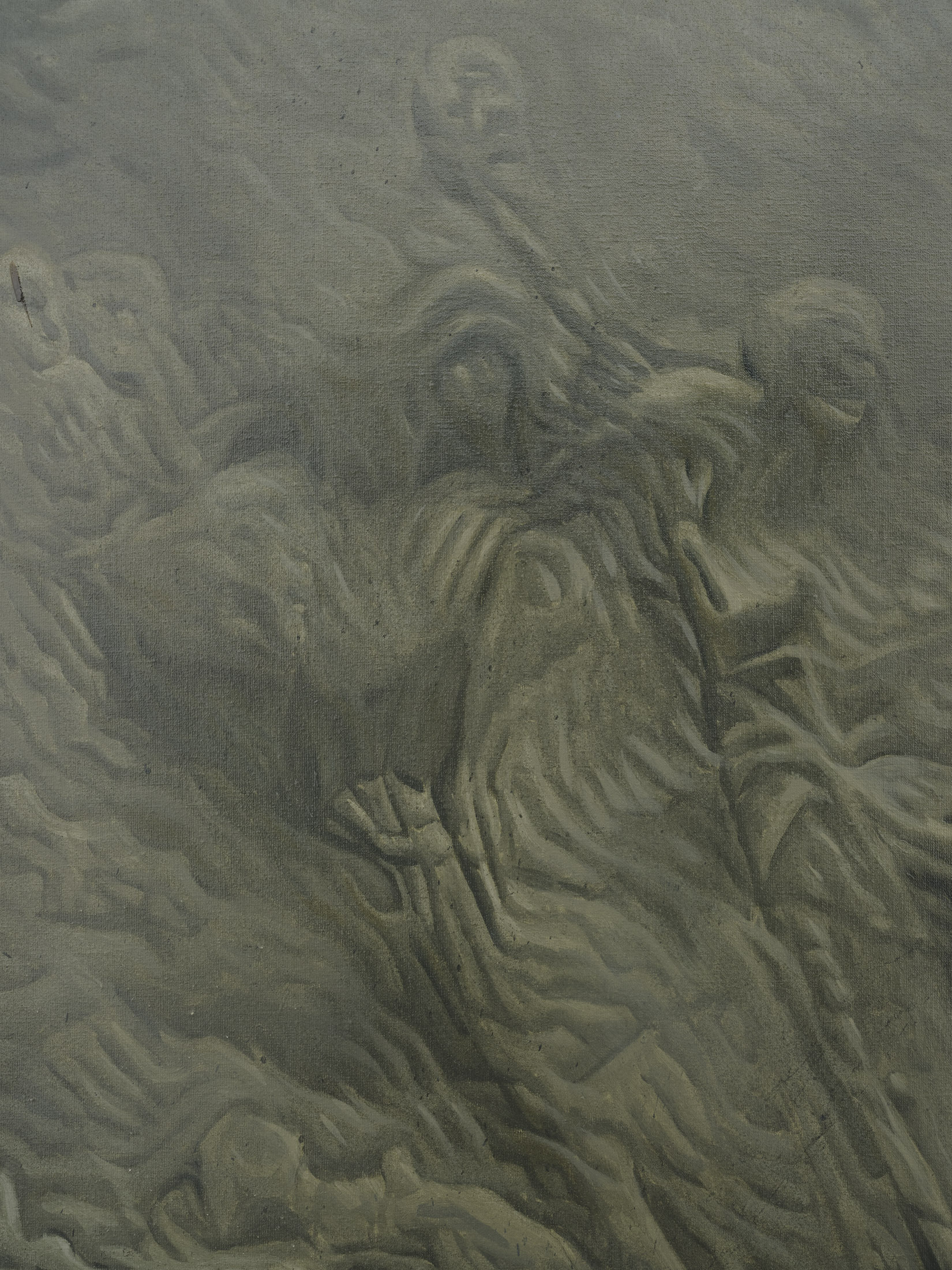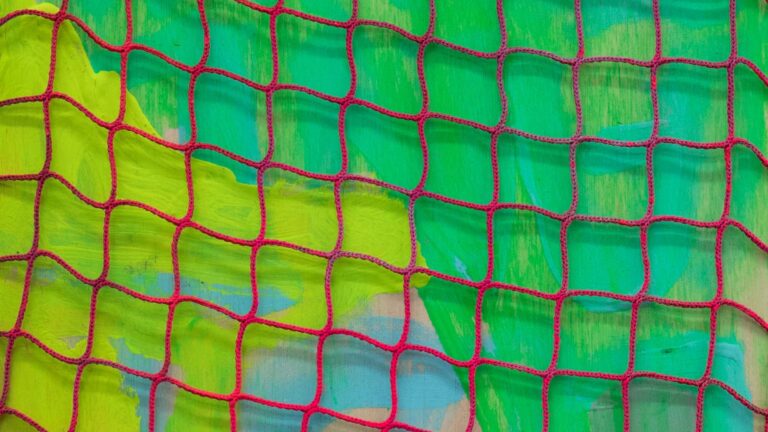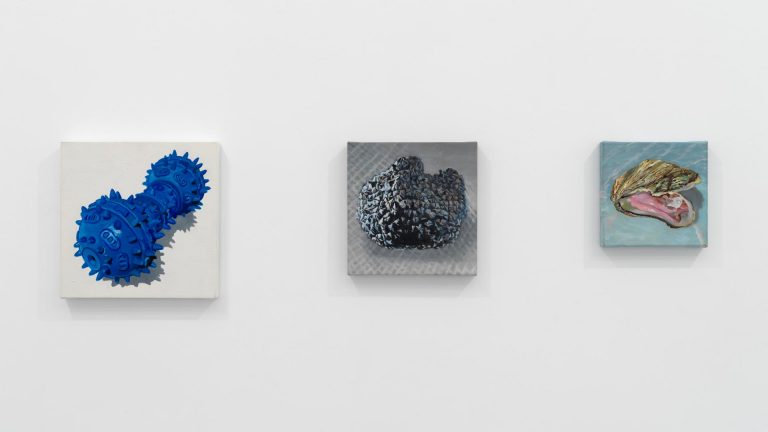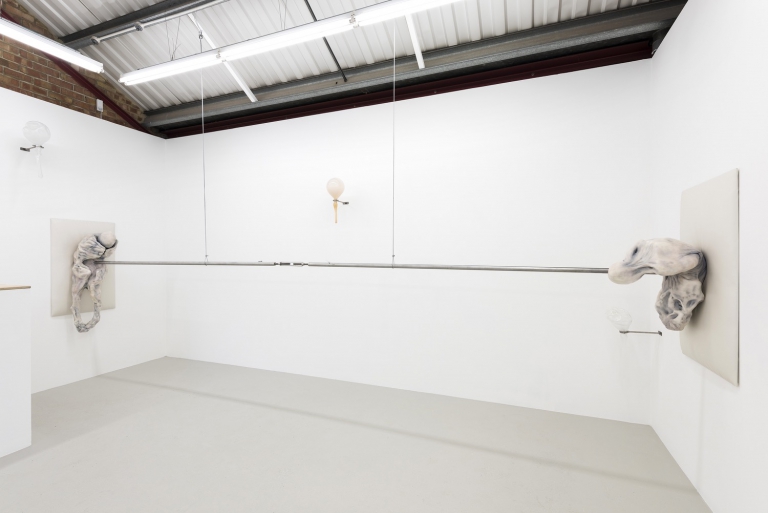Artist: Niklas Asker
Exhibition title: Other Artefacts
Venue: Union Pacific, London, UK
Date: October 7 – November 11, 2023
Photography: Reinis Lismanis / all images courtesy of the artist and Union Pacific, London
A nebulous energy characterises the practise of Niklas Asker; his work strives to capture the foundational, or the sacred qualities of art, whether through the amorphous uncanniness of his faceless figures, or the luminosity which arises from his earthy palette. Like Rodin– whose maquettes form Asker’s most recognisable influence– he speaks of ‘freeing’ himself, in this case from the boundaries of figuration; his subjects are often devoid of identity but instilled with expression.
Asker’s practice nods discernibly to western Christianity, although it is not religious in the literal sense of the word. Religion– like the body– offers a glimpse of our own mortality, and– like paintings– offers a glimpse of an alternative existence, or the ‘beyond’. Perhaps art is Asker’s own religion, concerned as he is with its role in our inconsolable search for meaning. Beneath this ‘beyond’– the cherubim and seraphim, the crown of thorns and the parallel realm– lies our own indisputable mortality. I recall a quote from Hannah Arendt’s The Human Condition (1958): “The task and potential greatness of mortals lies in their ability to produce things… which would deserve to be and, at least to a degree, are at home in everlastingness, so that through them mortals could find their place in a cosmos where everything is immortal except themselves”.
Above all, ‘Other Artefacts’ is a show about time. Asker’s stony figures take on the qualities of museum objects; his human subjects evoke questions of temporality. The Island is an anthropomorphic reincarnation of Arnold Böcklin’s renowned Isle of the Dead. This island is saturnine and solitary, its inky cypress trees fading to an impermeable darkness. In Asker’s rendition, ‘mystery’ again gives the newer painting its moody allure. Is the old woman depicted of this world or another– perhaps a dreamworld or even death? We cannot know, as is Asker’s intention, for what we are looking at is a painting.
This exhibition recalls the artist’s journeys through the halls of art history; it would be accurate to describe his process as an archaeological one as well as artistic. His influences– spanning Carl Eldh to W.J. Linton– are clear but reimagined; digitally manipulated friezes or figures whose features seem to melt beneath his focused mark-making. Asker speaks of ‘pure human expression, stripped of all unnecessary details’. How far can you pare back context, transpose an artwork from its origins, or even alter its content, whilst retaining its expressive moment? Sometimes Asker’s completed works look notably dissimilar to the references they developed from. They become entirely new– or other– artefacts.
-Ella Slater



